Joseph and Aseneth: A Christian Book
Published: Feb 2012
£55.00
Joseph and Aseneth , a book of the Old Testament Pseudepigrapha, is a love story about the biblical Joseph and his Egyptian wife Aseneth which, in richly symbolic language, tells how the idol worshipper Aseneth was converted to belief in the one God. In recent decades, it has featured prominently in discussions of Second Temple Judaism as a testimony to a Hellenistic diaspora Judaism that neither observed the rules of conversion to Judaism ( giyyur ) nor cared much for the laws of the Torah. Rivka Nir offers a completely different understanding. Joseph and Aseneth , she argues, teaches us nothing about Second Temple Judaism. Rather, its vocabulary, ideas, symbols and structure become fully comprehensible only when viewed against the background of Syriac Christianity of the third and fourth century. In this setting, Aseneth and Joseph are symbolic and typological images: Aseneth symbolizes the church, Joseph is a prototype of Christ, and their marriage is a symbolic representation of the eternal marriage between Christ and the church. Aseneth's religious transformation should be understood as conversion to Christianity, an example for polytheists to follow. Turning our attention to the central role virginity plays in the story, Nir addresses the problematic scene of the honeycomb and the bees, reading it as a call to those joining the church to take a vow of virginity and resolve to lead a life of sexual abstinence. Through Nir's detailed analysis of the symbols and metaphors of Joseph and Aseneth in a Christian context, the book coalesces into a tightly integrated and meaningful whole, on both the theological and the symbolic levels.
Joseph and Aseneth: A Christian Book
£55.00
Joseph and Aseneth , a book of the Old Testament Pseudepigrapha, is a love story about the biblical Joseph and his Egyptian wife Aseneth which, in richly symbolic language, tells how the idol worshipper Aseneth was converted to belief in the one God. In recent decades, it has featured prominently in discussions of Second Temple Judaism as a testimony to a Hellenistic diaspora Judaism that neither observed the rules of conversion to Judaism ( giyyur ) nor cared much for the laws of the Torah. Rivka Nir offers a completely different understanding. Joseph and Aseneth , she argues, teaches us nothing about Second Temple Judaism. Rather, its vocabulary, ideas, symbols and structure become fully comprehensible only when viewed against the background of Syriac Christianity of the third and fourth century. In this setting, Aseneth and Joseph are symbolic and typological images: Aseneth symbolizes the church, Joseph is a prototype of Christ, and their marriage is a symbolic representation of the eternal marriage between Christ and the church. Aseneth's religious transformation should be understood as conversion to Christianity, an example for polytheists to follow. Turning our attention to the central role virginity plays in the story, Nir addresses the problematic scene of the honeycomb and the bees, reading it as a call to those joining the church to take a vow of virginity and resolve to lead a life of sexual abstinence. Through Nir's detailed analysis of the symbols and metaphors of Joseph and Aseneth in a Christian context, the book coalesces into a tightly integrated and meaningful whole, on both the theological and the symbolic levels.
Preposterous Revelations: Visions of Apocalypse and Martyrdom in Hollywood Cinema 1980-2000
Published: Jan 2012
£21.00
This is an ambitious attempt to produce an interdisciplinary reading of a set of relatively recent Hollywood films that appear to make references to the biblical genre of apocalyptic and associated ideas of Christian martyrdom and eschatology: End of Days , Armageddon , Alien3 , The Rapture , The Seventh Sign . It is a 'preposterous' reading (Mieke Bal's term), reversing a common-sense impulse to view what comes first chronologically (the biblical text) as an unproblematic template rather than as itself the consequence of subsequent, contextualized readings. The cinematic reworkings Copier describes shift our understanding of both texts (biblical and cinematic) and genre. Within this process, the apocalyptic subject —the martyr —adopts variable poses that reflect the effects of this disorienting reversal: across the five films analysed, the martyr moves from identifiably Christian motivations to the representation of patriotic American masculinity, or even to something that, in a contrary sense, powerfully challenges the conventional masculinity of any martyrdom that counts as significant. To achieve a genuine interdisciplinarity, Copier not only avoids reading each film as if it were simply the visual counterpart to a (biblical) narrative, but also analyses in the case of each film what the 'shot list' of a key sequence reveals about the semiotics at work within its construction. Unlike most encounters between religion and film, her film analysis goes far beyond the identification of themes and motifs. Here the author engages with the larger field of film studies, and especially with film as a visual medium.
Preposterous Revelations: Visions of Apocalypse and Martyrdom in Hollywood Cinema 1980-2000
£21.00
This is an ambitious attempt to produce an interdisciplinary reading of a set of relatively recent Hollywood films that appear to make references to the biblical genre of apocalyptic and associated ideas of Christian martyrdom and eschatology: End of Days , Armageddon , Alien3 , The Rapture , The Seventh Sign . It is a 'preposterous' reading (Mieke Bal's term), reversing a common-sense impulse to view what comes first chronologically (the biblical text) as an unproblematic template rather than as itself the consequence of subsequent, contextualized readings. The cinematic reworkings Copier describes shift our understanding of both texts (biblical and cinematic) and genre. Within this process, the apocalyptic subject —the martyr —adopts variable poses that reflect the effects of this disorienting reversal: across the five films analysed, the martyr moves from identifiably Christian motivations to the representation of patriotic American masculinity, or even to something that, in a contrary sense, powerfully challenges the conventional masculinity of any martyrdom that counts as significant. To achieve a genuine interdisciplinarity, Copier not only avoids reading each film as if it were simply the visual counterpart to a (biblical) narrative, but also analyses in the case of each film what the 'shot list' of a key sequence reveals about the semiotics at work within its construction. Unlike most encounters between religion and film, her film analysis goes far beyond the identification of themes and motifs. Here the author engages with the larger field of film studies, and especially with film as a visual medium.
The Dictionary of Classical Hebrew: Volumes 1-9 paperback
Published: Nov 2011
£445.00
The Dictionary of Classical Hebrew is a completely new and innovative dictionary.
Unlike previous dictionaries, which have been dictionaries of biblical Hebrew, this is the first dictionary of the classical Hebrew language to include, as well as the biblical texts, Ben Sira, the Dead Sea Scrolls, and all the other known Hebrew inscriptions and manuscripts.
This Dictionary covers the period from the earliest times to 200 CE. It lists and analyses every occurrence of each Hebrew word that occurs in texts of that period, with an English translation of every Hebrew word and phrase cited. Among its special features are: a list of the non-biblical texts cited (especially the Dead Sea Scrolls), a word frequency index for each letter of the alphabet, a substantial bibliography and an English–Hebrew index in each volume.
The paperback edition contains exactly the same pages as the hardback, and is priced at less than half the hardback price.
Please use this page for ordering the complete set of 9 paperback vols., originally published between 1993 and 2016.
The Dictionary of Classical Hebrew: Volumes 1-9 paperback
£445.00
The Dictionary of Classical Hebrew is a completely new and innovative dictionary.
Unlike previous dictionaries, which have been dictionaries of biblical Hebrew, this is the first dictionary of the classical Hebrew language to include, as well as the biblical texts, Ben Sira, the Dead Sea Scrolls, and all the other known Hebrew inscriptions and manuscripts.
This Dictionary covers the period from the earliest times to 200 CE. It lists and analyses every occurrence of each Hebrew word that occurs in texts of that period, with an English translation of every Hebrew word and phrase cited. Among its special features are: a list of the non-biblical texts cited (especially the Dead Sea Scrolls), a word frequency index for each letter of the alphabet, a substantial bibliography and an English–Hebrew index in each volume.
The paperback edition contains exactly the same pages as the hardback, and is priced at less than half the hardback price.
Please use this page for ordering the complete set of 9 paperback vols., originally published between 1993 and 2016.
A Critical Engagement: Essays on the Hebrew Bible in Honour of J. Cheryl Exum
Published: Nov 2011
£75.00
This volume honours the distinctive contribution to Hebrew Bible studies over four decades by Cheryl Exum, Professor Emerita of Biblical Studies in the University of Sheffield. Her special interests have lain, first, in the modern literary criticism of the Hebrew Bible, where her key work was Tragedy and Biblical Narrative: Arrows of the Almighty . A second area has been feminist criticism of the Hebrew Bible; here her notable contributions were Fragmented Women: Feminist (Sub)versions of Biblical Narratives and Plotted, Shot, and Painted: Cultural Representations of Biblical Women . A more recent, and now almost favourite, theme is the Bible and cultural studies, especially the Bible and art. Key works here have been a series of edited volumes, such as Beyond the Biblical Horizon: The Bible and the Arts , and The Bible in Film / The Bible and Film . Her fourth area of continuing interest has been the Song of Songs, with many articles culminating in her perceptive commentary in the Old Testament Library series. In this rich volume, 25 of her friends and colleagues offer her papers on all these themes. Several are on or around the Song of Songs (Graeme Auld, Fiona Black, David Clines, Sara Japhet, Martti Nissinen, Yair Zakovitch), and topics of feminist interest (Yairah Amit, Athalya Brenner, Claudia Camp, Hugh Pyper, Jack Sasson). Cultural studies are represented by Alice Bach, Hans Barstad, Andrew Davies, David Gunn, Martin O'Kane, John Sawyer and Ellen van Wolde, and literary criticism by Michael Fox, Edwin Good, Norman Gottwald, Edward Greenstein, Francis Landy, Burke Long and Hugh Williamson.
A Critical Engagement: Essays on the Hebrew Bible in Honour of J. Cheryl Exum
£75.00
This volume honours the distinctive contribution to Hebrew Bible studies over four decades by Cheryl Exum, Professor Emerita of Biblical Studies in the University of Sheffield. Her special interests have lain, first, in the modern literary criticism of the Hebrew Bible, where her key work was Tragedy and Biblical Narrative: Arrows of the Almighty . A second area has been feminist criticism of the Hebrew Bible; here her notable contributions were Fragmented Women: Feminist (Sub)versions of Biblical Narratives and Plotted, Shot, and Painted: Cultural Representations of Biblical Women . A more recent, and now almost favourite, theme is the Bible and cultural studies, especially the Bible and art. Key works here have been a series of edited volumes, such as Beyond the Biblical Horizon: The Bible and the Arts , and The Bible in Film / The Bible and Film . Her fourth area of continuing interest has been the Song of Songs, with many articles culminating in her perceptive commentary in the Old Testament Library series. In this rich volume, 25 of her friends and colleagues offer her papers on all these themes. Several are on or around the Song of Songs (Graeme Auld, Fiona Black, David Clines, Sara Japhet, Martti Nissinen, Yair Zakovitch), and topics of feminist interest (Yairah Amit, Athalya Brenner, Claudia Camp, Hugh Pyper, Jack Sasson). Cultural studies are represented by Alice Bach, Hans Barstad, Andrew Davies, David Gunn, Martin O'Kane, John Sawyer and Ellen van Wolde, and literary criticism by Michael Fox, Edwin Good, Norman Gottwald, Edward Greenstein, Francis Landy, Burke Long and Hugh Williamson.
Reconfiguring Mark’s Jesus: Narrative Criticism After Poststructuralism
Published: Oct 2011
£60.00
As readers, we are captivated by the resemblance of literary characters to actual persons. But it is precisely this illusion that allows characterization to play host to dominant ideologies of both 'literature' and 'the self'. This is especially true when we confuse narrative figures and historical persons.
Over the last thirty years, New Testament narrative criticism has developed into a major methodological approach in Biblical Studies. But for all its ingenuity and promise, it has been reluctant to let go of conventional historical-critical moorings. As a result, one is hard pressed to find any substantive difference between reconstructions of the historical Jesus and narrative-critical readings of the character Jesus.
Reconfiguring Mark's Jesus endeavors to reorient and advance narrative criticism by analysing the Gospel of Mark's characterization of the figure of Jesus in relation to three other fundamental aspects of narrative discourse: focalization, dialogue, and plot. This intertextual reading, in which Mark is set alongside two ancient novels — Leucippe and Clitophon and the Life of Aesop —problematizes implicitly modern notions of literary characters as autonomous 'agents', as well as 'naturalizing' treatments of literary characters as historical referents. Highlighting the inherent ambiguity of narrative discourse, particularly with regard to referentiality, human agency, and the complex relationship between literature and history, Reconfiguring Mark's Jesus illustrates the diverse and complex ways that narratives, of necessity, produce fragmented characters that refract the inherent paradoxes of narrative itself and of human subjectivity.
Reconfiguring Mark’s Jesus: Narrative Criticism After Poststructuralism
£60.00
As readers, we are captivated by the resemblance of literary characters to actual persons. But it is precisely this illusion that allows characterization to play host to dominant ideologies of both 'literature' and 'the self'. This is especially true when we confuse narrative figures and historical persons.
Over the last thirty years, New Testament narrative criticism has developed into a major methodological approach in Biblical Studies. But for all its ingenuity and promise, it has been reluctant to let go of conventional historical-critical moorings. As a result, one is hard pressed to find any substantive difference between reconstructions of the historical Jesus and narrative-critical readings of the character Jesus.
Reconfiguring Mark's Jesus endeavors to reorient and advance narrative criticism by analysing the Gospel of Mark's characterization of the figure of Jesus in relation to three other fundamental aspects of narrative discourse: focalization, dialogue, and plot. This intertextual reading, in which Mark is set alongside two ancient novels — Leucippe and Clitophon and the Life of Aesop —problematizes implicitly modern notions of literary characters as autonomous 'agents', as well as 'naturalizing' treatments of literary characters as historical referents. Highlighting the inherent ambiguity of narrative discourse, particularly with regard to referentiality, human agency, and the complex relationship between literature and history, Reconfiguring Mark's Jesus illustrates the diverse and complex ways that narratives, of necessity, produce fragmented characters that refract the inherent paradoxes of narrative itself and of human subjectivity.
Emotions in Biblical Law: A Cognitive Science Approach
Published: Oct 2011
£50.00
This study pioneers the use of insights from cognitive sciences, such as evolutionary biology, neuroscience, and developmental psychology, as heuristic tools for interpreting ancient texts. The approach could be described as 'psycho-biological'. The focus is on emotions in the various Pentateuchal legal collections. Kazen discusses the role of disgust, empathy, fear, and a sense of justice, for particular moral and ritual issues: purity and holiness; humanitarian concern for vulnerable categories; ethnocentrism and xenophobia; divine punishment and demonic threat; revenge, compensation, and ransom (kofer), together with removal (kipper) rites.
The book consists of two main parts, framed by an introductory chapter and a concluding discussion. In the first part, Kazen explores cognitive foundations, including biological and neuroscientific underpinnings for basic affects, and the role of culture in shaping both conventional morality and ritual behaviour. Four particular emotions are then outlined. In the second part, these insights from cognitive science are applied in analyses of particular texts. After an overview of the Pentateuchal legal collections, each of the four emotions is dealt with in a separate chapter. Kazen constantly relates a cognitive science approach to more traditional source and redaction-critical analysis, regarding them as complementary.
As a result, the Pentateuchal legal collections are seen as emotional texts, expressing strong affects —which influences our understanding of the character of Israelite 'law'. Kazen suggests that interaction and conflict between various emotions can explain discrepancies and tensions between humanitarian concerns and ethnocentrism, and between empathy and justice. He also demonstrates that viewing emotions as common denominators contains a potential for solving some difficult and long-standing conundrums. He argues that a focus on the human embodied experience rather than on theological convictions and theoretical ideas may avoid some interpretative dead ends and open up new avenues for understanding ancient texts.
Emotions in Biblical Law: A Cognitive Science Approach
£50.00
This study pioneers the use of insights from cognitive sciences, such as evolutionary biology, neuroscience, and developmental psychology, as heuristic tools for interpreting ancient texts. The approach could be described as 'psycho-biological'. The focus is on emotions in the various Pentateuchal legal collections. Kazen discusses the role of disgust, empathy, fear, and a sense of justice, for particular moral and ritual issues: purity and holiness; humanitarian concern for vulnerable categories; ethnocentrism and xenophobia; divine punishment and demonic threat; revenge, compensation, and ransom (kofer), together with removal (kipper) rites.
The book consists of two main parts, framed by an introductory chapter and a concluding discussion. In the first part, Kazen explores cognitive foundations, including biological and neuroscientific underpinnings for basic affects, and the role of culture in shaping both conventional morality and ritual behaviour. Four particular emotions are then outlined. In the second part, these insights from cognitive science are applied in analyses of particular texts. After an overview of the Pentateuchal legal collections, each of the four emotions is dealt with in a separate chapter. Kazen constantly relates a cognitive science approach to more traditional source and redaction-critical analysis, regarding them as complementary.
As a result, the Pentateuchal legal collections are seen as emotional texts, expressing strong affects —which influences our understanding of the character of Israelite 'law'. Kazen suggests that interaction and conflict between various emotions can explain discrepancies and tensions between humanitarian concerns and ethnocentrism, and between empathy and justice. He also demonstrates that viewing emotions as common denominators contains a potential for solving some difficult and long-standing conundrums. He argues that a focus on the human embodied experience rather than on theological convictions and theoretical ideas may avoid some interpretative dead ends and open up new avenues for understanding ancient texts.
Bible, Art, Gallery
Published: Sep 2011
£50.00
While Old Masters' paintings of biblical scenes held by major galleries in many countries are visited and seen by thousands, gems of biblical art in smaller, provincial galleries seldom get the recognition and attention they deserve. Over two years, assisted by funding from the British Academy, conferences were held at the Barber Institute of Fine Arts, University of Birmingham, and at the Manchester Art Gallery, highlighting some of the significant biblical paintings held in the collections of both galleries. The papers presented at these conferences, drawn from the worlds of biblical studies, art history, philosophy, sociology and music, and collected in this volume, reflect the interdisciplinary goals of the project. These essays serve not only to showcase biblical paintings by lesser known artists but also to illustrate the wide range of perspectives and insights brought by the different academic disciplines.
Bible, Art, Gallery
£50.00
While Old Masters' paintings of biblical scenes held by major galleries in many countries are visited and seen by thousands, gems of biblical art in smaller, provincial galleries seldom get the recognition and attention they deserve. Over two years, assisted by funding from the British Academy, conferences were held at the Barber Institute of Fine Arts, University of Birmingham, and at the Manchester Art Gallery, highlighting some of the significant biblical paintings held in the collections of both galleries. The papers presented at these conferences, drawn from the worlds of biblical studies, art history, philosophy, sociology and music, and collected in this volume, reflect the interdisciplinary goals of the project. These essays serve not only to showcase biblical paintings by lesser known artists but also to illustrate the wide range of perspectives and insights brought by the different academic disciplines.
Korean Feminists in Conversation with the Bible, Church and Society
Published: Sep 2011
£50.00
This book offers scholars and students outside Korea some insight into what forms feminist biblical interpretation takes in Korea and what approaches Korean feminists adopt for dealing with the Bible in their writing and their professional lives.
The contributors to this book represent a wide spectrum of the Korean feminist Christian movement. They include university and seminary teachers, ministers, and field workers. This book is a product of their numerous meetings and discussions on the practical issues that define contemporary Korean women's lives. In it, the contributors reflect on the diverse situations modern Korean women have faced and continue to struggle with, among them, the traditional religious culture based on Confucianism, economic globalization, postcolonialism, the problems of migrant women labourers, and the trauma of being forced into sexual slavery for Japanese soldiers during World War II. They view these situations in the light of the lives and experiences of women in the Old and New Testaments, and they look to the Bible for resources for dealing with them.
This is socially engaged biblical interpretation. It goes beyond the academic study of the Bible to a wider engagement with the church and with Korean society.
The volume is published in cooperation with Ewha Institute for Women's Theological Studies.
Korean Feminists in Conversation with the Bible, Church and Society
£50.00
This book offers scholars and students outside Korea some insight into what forms feminist biblical interpretation takes in Korea and what approaches Korean feminists adopt for dealing with the Bible in their writing and their professional lives.
The contributors to this book represent a wide spectrum of the Korean feminist Christian movement. They include university and seminary teachers, ministers, and field workers. This book is a product of their numerous meetings and discussions on the practical issues that define contemporary Korean women's lives. In it, the contributors reflect on the diverse situations modern Korean women have faced and continue to struggle with, among them, the traditional religious culture based on Confucianism, economic globalization, postcolonialism, the problems of migrant women labourers, and the trauma of being forced into sexual slavery for Japanese soldiers during World War II. They view these situations in the light of the lives and experiences of women in the Old and New Testaments, and they look to the Bible for resources for dealing with them.
This is socially engaged biblical interpretation. It goes beyond the academic study of the Bible to a wider engagement with the church and with Korean society.
The volume is published in cooperation with Ewha Institute for Women's Theological Studies.
The Letter to the Romans: Salvation as Justice and the Deconstruction of Law
Published: Sep 2011
£70.00
Romans, says Waetjen, is the first publication of the Christ movement. To understand it well is therefore a task of monumental importance, and to understand it today requires a postmodern hermeneutics, in which the interpreter's subjective experience of reading the text is correlated with historical-critical knowledge and social-scientific criticism. That hermeneutics has to create a new genre of commentary, making room for readers' prior understandings as well as for a dynamic form of close reading and consistency building. The outcome is a contemporizing of Paul's theology that induces conversation with Derrida, Žižek, Badiou and Agamben and others.
The central theme of Romans is, according to Waetjen, the healing of humanity through the realization of 'the justice of God', which is disclosed in the movement 'out of trust into trust', or, more specifically, out of the trust of Abraham into the trust of Jesus Christ. Living on this side of the law of Sinai and therefore being conscious of the condition of sin requires the reconciliation of Christ's death and the justification of Christ's resurrection in order to participate in the New Humanity of life-giving spirits.
Consequently Romans is more than a rhetorical effort to mediate conflicts between Jewish and Gentile believers in Rome. Composed prior to his journey to Jerusalem with the possibility of martyrdom before him, the letter is Paul's major theological testament.
The Letter to the Romans: Salvation as Justice and the Deconstruction of Law
£70.00
Romans, says Waetjen, is the first publication of the Christ movement. To understand it well is therefore a task of monumental importance, and to understand it today requires a postmodern hermeneutics, in which the interpreter's subjective experience of reading the text is correlated with historical-critical knowledge and social-scientific criticism. That hermeneutics has to create a new genre of commentary, making room for readers' prior understandings as well as for a dynamic form of close reading and consistency building. The outcome is a contemporizing of Paul's theology that induces conversation with Derrida, Žižek, Badiou and Agamben and others.
The central theme of Romans is, according to Waetjen, the healing of humanity through the realization of 'the justice of God', which is disclosed in the movement 'out of trust into trust', or, more specifically, out of the trust of Abraham into the trust of Jesus Christ. Living on this side of the law of Sinai and therefore being conscious of the condition of sin requires the reconciliation of Christ's death and the justification of Christ's resurrection in order to participate in the New Humanity of life-giving spirits.
Consequently Romans is more than a rhetorical effort to mediate conflicts between Jewish and Gentile believers in Rome. Composed prior to his journey to Jerusalem with the possibility of martyrdom before him, the letter is Paul's major theological testament.
Reading Ideologies: Essays on the Bible and Interpretation in Honor of Mary Ann Tolbert
Published: Sep 2011
£75.00
Mary Ann Tolbert has been a pioneering voice in what we have now come to call 'interdisciplinary reading' of the Bible. In the early stages of her career, Tolbert used New Testament parables to push biblical scholarship beyond the traditional confines of historical-critical methods. Over the past four decades, she has made significant contributions to psychoanalytical, narrative, rhetorical, feminist, and queer readings of the Bible, and has interrogated the social location of biblical interpreters as well as the ideological implications of reading and reading methodologies.
Divided into three main sections, this collection of essays from biblical scholars around the world to honor Tolbert engage the very issues that have driven and defined Tolbert's scholarship: reading between the historical and the literary; reading between biblical authority and social location; and reading between gender and sexuality. The title of the collection focuses on an often-used but arguably under-examined term in biblical studies: 'ideology'. Together, essays in this volume not only perform ideological criticism of the Bible but also profess the ideological nature of criticism itself, since —regardless of 'what' and 'how' one is reading —the act of reading is always already infused with ideology. By highlighting the work of ideology in interpretation, this volume ultimately suggests that while ideology impacts interpretation of meaning, the meaning of ideology itself also needs to be interpreted.
Reading Ideologies: Essays on the Bible and Interpretation in Honor of Mary Ann Tolbert
£75.00
Mary Ann Tolbert has been a pioneering voice in what we have now come to call 'interdisciplinary reading' of the Bible. In the early stages of her career, Tolbert used New Testament parables to push biblical scholarship beyond the traditional confines of historical-critical methods. Over the past four decades, she has made significant contributions to psychoanalytical, narrative, rhetorical, feminist, and queer readings of the Bible, and has interrogated the social location of biblical interpreters as well as the ideological implications of reading and reading methodologies.
Divided into three main sections, this collection of essays from biblical scholars around the world to honor Tolbert engage the very issues that have driven and defined Tolbert's scholarship: reading between the historical and the literary; reading between biblical authority and social location; and reading between gender and sexuality. The title of the collection focuses on an often-used but arguably under-examined term in biblical studies: 'ideology'. Together, essays in this volume not only perform ideological criticism of the Bible but also profess the ideological nature of criticism itself, since —regardless of 'what' and 'how' one is reading —the act of reading is always already infused with ideology. By highlighting the work of ideology in interpretation, this volume ultimately suggests that while ideology impacts interpretation of meaning, the meaning of ideology itself also needs to be interpreted.
Jerusalem and the Nations: Studies in the Book of Isaiah
Published: Sep 2011
£50.00
This volume contains the fruit of three decades of Ronald Clements's researches on prophecy in the Old Testament. In sixteen papers, seven of them not previously published, he broaches several leading questions about the origins of written prophecy in the Old Testament. A major focus is on the impact of the events of 701 BCE on the formation of the Isaiah book as a whole and the rise of Jerusalem as a centre of religious hope.
Further studies deal with the role of the Isaiah book in current biblical interpretation and the failure of twentieth-century interpreters to explain its unity. Other subjects concern ideas of divine providence, theodicy, and the links between ancient scribal methods of book formation and canonical authority. Special attention is given to the attempts to retain traditional Christian approaches to a book, the interpretation of which has been greatly transformed by modern critical study.
Jerusalem and the Nations: Studies in the Book of Isaiah
£50.00
This volume contains the fruit of three decades of Ronald Clements's researches on prophecy in the Old Testament. In sixteen papers, seven of them not previously published, he broaches several leading questions about the origins of written prophecy in the Old Testament. A major focus is on the impact of the events of 701 BCE on the formation of the Isaiah book as a whole and the rise of Jerusalem as a centre of religious hope.
Further studies deal with the role of the Isaiah book in current biblical interpretation and the failure of twentieth-century interpreters to explain its unity. Other subjects concern ideas of divine providence, theodicy, and the links between ancient scribal methods of book formation and canonical authority. Special attention is given to the attempts to retain traditional Christian approaches to a book, the interpretation of which has been greatly transformed by modern critical study.
Revelation, Second Edition
Published: Aug 2011
£15.00 – £35.00
This reading of Revelation views the text as John's response to the problem of social accommodation in the churches of Asia Minor. Knight works from the hypothesis, now increasingly argued in scholarly circles, that there was no persecution of the Christians by the emperor Domitian at the end of the first century CE, and he explains the references to martyrdom in the Apocalypse as mainly symbolic. Knight argues that John is creating awareness of a crisis in order to call his readers to a stricter pattern of behaviour than Paul had allowed when writing to the Corinthians. This readable chapter-by-chapter commentary on the book concludes with a section on the main theological ideas of Revelation. This is a reprint of the edition originally published in 1999.
Revelation, Second Edition
£15.00 – £35.00
This reading of Revelation views the text as John's response to the problem of social accommodation in the churches of Asia Minor. Knight works from the hypothesis, now increasingly argued in scholarly circles, that there was no persecution of the Christians by the emperor Domitian at the end of the first century CE, and he explains the references to martyrdom in the Apocalypse as mainly symbolic. Knight argues that John is creating awareness of a crisis in order to call his readers to a stricter pattern of behaviour than Paul had allowed when writing to the Corinthians. This readable chapter-by-chapter commentary on the book concludes with a section on the main theological ideas of Revelation. This is a reprint of the edition originally published in 1999.
The Lord of the Entire World: Lord Jesus, a Challenge to Lord Caesar?
Published: Aug 2011
£70.00
How would the confession, 'Jesus is Lord', have been understood in the first-century Roman world? Was it more than a statement of one's devotion to Jesus? Was it also an implicit challenge to the living Caesar, the lord of the Roman empire?
There were many lords in the first century and the use of the title kyrios was complex. Clearly Paul was influenced by the use of this title for Yahweh in the Greek Old Testament. But he was also part of a culture in which the title was used for many persons, including fathers, slave owners, government officials —and the emperor.
However, the title kyrios was used sparingly of emperors in the early and mid-first century. On the basis of the extant evidence, scholars since Deissmann have come to differing conclusions as to whether a challenge to the emperor is contained in the phrase.
Fantin proposes a more powerful method of resolving the question, drawing upon the insights of relevance theory. He examines a whole range of persons referred to with this title, and evaluates the potential influence of such contexts on Paul's usage. Only then is it possible to draw compelling conclusions on whether any challenge is likely to be implied.
In The Lord of the Entire World, Fantin shows that the living Caesar was indeed acknowledged in Paul's time as the supreme lord of the Roman world. Key New Testament texts such as Romans 10.9, 1 Corinthians 8.6 and Philippians 2.11 show that in all likelihood the Christian confession was in fact a challenge to imperial authority.
The Lord of the Entire World: Lord Jesus, a Challenge to Lord Caesar?
£70.00
How would the confession, 'Jesus is Lord', have been understood in the first-century Roman world? Was it more than a statement of one's devotion to Jesus? Was it also an implicit challenge to the living Caesar, the lord of the Roman empire?
There were many lords in the first century and the use of the title kyrios was complex. Clearly Paul was influenced by the use of this title for Yahweh in the Greek Old Testament. But he was also part of a culture in which the title was used for many persons, including fathers, slave owners, government officials —and the emperor.
However, the title kyrios was used sparingly of emperors in the early and mid-first century. On the basis of the extant evidence, scholars since Deissmann have come to differing conclusions as to whether a challenge to the emperor is contained in the phrase.
Fantin proposes a more powerful method of resolving the question, drawing upon the insights of relevance theory. He examines a whole range of persons referred to with this title, and evaluates the potential influence of such contexts on Paul's usage. Only then is it possible to draw compelling conclusions on whether any challenge is likely to be implied.
In The Lord of the Entire World, Fantin shows that the living Caesar was indeed acknowledged in Paul's time as the supreme lord of the Roman world. Key New Testament texts such as Romans 10.9, 1 Corinthians 8.6 and Philippians 2.11 show that in all likelihood the Christian confession was in fact a challenge to imperial authority.
Journal of Greco-Roman Christianity and Judaism 7 (2010)
Published: Aug 2011
£80.00
This is the seventh volume of the hard-copy edition of a journal that has been published online (www.jgrchj.net) since 2000. Volume 1 was for 2000, Volume 2 was for 2001 —2005, Volume 3 was for 2006, Volume 4 was for 2007, Volume 5 was for 2008, Volume 6 was for 2009 and Volume 7 is for 2010. As they appear, the hardcopy editions will replace the online materials. The scope of JGRChJ is the texts, language and cultures of the Greco-Roman world of early Christianity and Judaism. The papers published in JGRChJ are designed to pay special attention to the 'larger picture' of politics, culture, religion and language, engaging as well with modern theoretical approaches.
Journal of Greco-Roman Christianity and Judaism 7 (2010)
£80.00
This is the seventh volume of the hard-copy edition of a journal that has been published online (www.jgrchj.net) since 2000. Volume 1 was for 2000, Volume 2 was for 2001 —2005, Volume 3 was for 2006, Volume 4 was for 2007, Volume 5 was for 2008, Volume 6 was for 2009 and Volume 7 is for 2010. As they appear, the hardcopy editions will replace the online materials. The scope of JGRChJ is the texts, language and cultures of the Greco-Roman world of early Christianity and Judaism. The papers published in JGRChJ are designed to pay special attention to the 'larger picture' of politics, culture, religion and language, engaging as well with modern theoretical approaches.
Sacred Texts and Sacred Meanings: Studies in Biblical Language and Literature
Published: Jun 2011
£75.00
John Sawyer has been known for over 40 years as one of the finest British biblical scholars, always alert to new perspectives in biblical criticism and a pioneer in fruitful applications of new, often interdisciplinary, research methods. He has been an inspiring teacher to generations of students in Glasgow (1964-65), Newcastle upon Tyne (1965-94), Lancaster (1994-2002) and Oxford (2005-2008). From the very beginning he saw the need to apply sound linguistic theory to the study of the Bible, with the fundamental insight that all texts can have, and very often have had, more than one meaning.
No one meaning can claim priority over the others, he argues. The 'original meaning', more or less convincingly reconstructed by modern scholarship, can claim chronological priority, but that is all. What the text has meant to its Jewish and Christian readers down the centuries should be as much the subject of scholarly attention as any 'original' meaning. This is the unifying strand in the whole of his work, from his groundbreaking Semantics in Biblical Research: New Methods of Defining Hebrew Words for Salvation (1972) and his From Moses to Patmos: New Perspectives in Old Testament Study (1977) to his fascinating The Fifth Gospel: Isaiah in the History of Christianity (1996) and his Sacred Languages and Sacred Texts (1999). Among his most recent major contributions in this area have been his co-editorship of the Blackwell Bible Commentary Series, his edited Blackwell Companion to the Bible and Culture (2006) and his own Concise Dictionary of the Bible and its Reception (2009).
In 2011 John Sawyer has been elected President of the Society for Old Testament Study, and to celebrate that appointment Sheffield Phoenix Press is honoured to present this representative selection of 46 of his papers, some previously unpublished and some originally published in rather obscure places.
Sacred Texts and Sacred Meanings: Studies in Biblical Language and Literature
£75.00
John Sawyer has been known for over 40 years as one of the finest British biblical scholars, always alert to new perspectives in biblical criticism and a pioneer in fruitful applications of new, often interdisciplinary, research methods. He has been an inspiring teacher to generations of students in Glasgow (1964-65), Newcastle upon Tyne (1965-94), Lancaster (1994-2002) and Oxford (2005-2008). From the very beginning he saw the need to apply sound linguistic theory to the study of the Bible, with the fundamental insight that all texts can have, and very often have had, more than one meaning.
No one meaning can claim priority over the others, he argues. The 'original meaning', more or less convincingly reconstructed by modern scholarship, can claim chronological priority, but that is all. What the text has meant to its Jewish and Christian readers down the centuries should be as much the subject of scholarly attention as any 'original' meaning. This is the unifying strand in the whole of his work, from his groundbreaking Semantics in Biblical Research: New Methods of Defining Hebrew Words for Salvation (1972) and his From Moses to Patmos: New Perspectives in Old Testament Study (1977) to his fascinating The Fifth Gospel: Isaiah in the History of Christianity (1996) and his Sacred Languages and Sacred Texts (1999). Among his most recent major contributions in this area have been his co-editorship of the Blackwell Bible Commentary Series, his edited Blackwell Companion to the Bible and Culture (2006) and his own Concise Dictionary of the Bible and its Reception (2009).
In 2011 John Sawyer has been elected President of the Society for Old Testament Study, and to celebrate that appointment Sheffield Phoenix Press is honoured to present this representative selection of 46 of his papers, some previously unpublished and some originally published in rather obscure places.
The Matter of the Text: Material Engagements Between Luke and the Five Senses
Published: May 2011
£60.00
When the Lukan Jesus stands up to read in the Nazareth synagogue, he unrolls and rolls up a scroll. At this moment —which scholars have read as programmatic for the Gospel of Luke —the material text frames the written and spoken word. Here reading is an engagement with the senses of touch, sight and hearing. The organs of sense —skin, eyes, ears and mouth —function as mediators of the material text.
By contrast, our contemporary practices of reading as biblical scholars and critics commonly ignore the underlying materiality that is given to writing. In an ecological context where the mass production of Bibles is part of a consumerist economics that does not walk lightly on the Earth, and in an Australian postcolonial context where Bibles arrived as material artefacts of European colonizers, this book asks what modes of reading might best be suited to the materiality of the text. Engaging with the Gospel of Luke and the five senses, The Matter of the Text enacts a mode of reading that attends to the underlying materiality of the text.
Reading with the senses offers a way of imagining the mutual touching of artefact and writing and the absent presence of the material text, where matter is given to the word as a visible voice.
The Matter of the Text: Material Engagements Between Luke and the Five Senses
£60.00
When the Lukan Jesus stands up to read in the Nazareth synagogue, he unrolls and rolls up a scroll. At this moment —which scholars have read as programmatic for the Gospel of Luke —the material text frames the written and spoken word. Here reading is an engagement with the senses of touch, sight and hearing. The organs of sense —skin, eyes, ears and mouth —function as mediators of the material text.
By contrast, our contemporary practices of reading as biblical scholars and critics commonly ignore the underlying materiality that is given to writing. In an ecological context where the mass production of Bibles is part of a consumerist economics that does not walk lightly on the Earth, and in an Australian postcolonial context where Bibles arrived as material artefacts of European colonizers, this book asks what modes of reading might best be suited to the materiality of the text. Engaging with the Gospel of Luke and the five senses, The Matter of the Text enacts a mode of reading that attends to the underlying materiality of the text.
Reading with the senses offers a way of imagining the mutual touching of artefact and writing and the absent presence of the material text, where matter is given to the word as a visible voice.
Paradoxes of Paradise: Identity and Difference in the Song of Songs, Second Edition
Published: May 2011
£22.50
Rabbi Akiba is famously reported to have said, 'Heaven forbid that any one in Israel ever disputed that the Song of Songs is holy, for the whole world is not worth the day on which the Song of Songs was given to Israel, for all the writings are holy, but the Song of Songs is the Holy of Holies'. This book is an extended elaboration of Rabbi Akiba's statement. It argues that the Song is a Hellenistic composition, drawing on the resources of ancient Near Eastern erotic poetry and characterized by a complex though fragile unity.
Through the metaphors, the lovers progressively see themselves reflected in each other, as well as in the world about them and the poetry of love. The poem celebrates the land of Israel in spring, an ideal humanity, and a perfected language. It culminates in the contestation of love and death, and the assertion that only love survives the exigencies of time.
The pervasive ambiguity of the Song, in which one never quite knows what happens, is related to the ambivalence of beauty, which is closely related to ugliness. Hence the surrealist imagery of the Song verges upon the grotesque and stretches the resources of our imagination. Through a detailed comparison with the Garden of Eden story, Landy argues that the Song is a vision of paradise seen from the outside, through the ironic poetic gaze, in a world potentially hostile or indifferent.
Paradoxes of Paradise: Identity and Difference in the Song of Songs, Second Edition
£22.50
Rabbi Akiba is famously reported to have said, 'Heaven forbid that any one in Israel ever disputed that the Song of Songs is holy, for the whole world is not worth the day on which the Song of Songs was given to Israel, for all the writings are holy, but the Song of Songs is the Holy of Holies'. This book is an extended elaboration of Rabbi Akiba's statement. It argues that the Song is a Hellenistic composition, drawing on the resources of ancient Near Eastern erotic poetry and characterized by a complex though fragile unity.
Through the metaphors, the lovers progressively see themselves reflected in each other, as well as in the world about them and the poetry of love. The poem celebrates the land of Israel in spring, an ideal humanity, and a perfected language. It culminates in the contestation of love and death, and the assertion that only love survives the exigencies of time.
The pervasive ambiguity of the Song, in which one never quite knows what happens, is related to the ambivalence of beauty, which is closely related to ugliness. Hence the surrealist imagery of the Song verges upon the grotesque and stretches the resources of our imagination. Through a detailed comparison with the Garden of Eden story, Landy argues that the Song is a vision of paradise seen from the outside, through the ironic poetic gaze, in a world potentially hostile or indifferent.
Network Apocalypse: Visions of the End in an Age of Internet Media
Published: May 2011
£50.00
In the twenty-first century, religious belief is undergoing change, driven in part by new communication technologies. Such technologies have often given rise to notable changes in religion, some of the most revolutionary of them being apocalyptic in character. What, then, is the nature of the changes in religious belief created or enabled by the Internet?
In this collection, the first of its kind, nine scholars consider whether the empowerment offered by Internet communication generally encourages the exchange of ideas or whether, rather, it allows individuals to seal themselves off into ideological ghettos of the like-minded. These nine essays explore those possibilities by documenting and analysing the diversity of apocalyptic belief online.
Andrew Fergus Wilson looks at those using the Internet to explore the syncretism that lies at the heart of the 'cultic milieu'. William A. Stahl examines the online discourse about climate change to find the apocalyptic structures undergirding it. Dennis Beesley examines End Times discourse on the video sharing Web site YouTube. J.L. Schatz explores how the apocalyptic imaginings of science fiction set the trajectory of our shared future. Amarnath Amarasingam documents how the Internet is encouraging the belief that President Barack Obama is the Antichrist. Salvador Jimenez Murguia analyses an Internet-based service offered to those wishing to communicate with their loved ones who might be 'left behind' after the anticipated 'Rapture'. David Drissel documents how social networking facilitates connections among Muslims who share a belief in a nearing apocalypse. James Schirmer examines an apocalyptic computer game individuals use to explore personal ethics. Robert Glenn Howard documents the first Internet-based new religious movement —reflected in the beliefs of the suicidal 1997 'Heaven's Gate' group, extant in their archived websites.
Network Apocalypse: Visions of the End in an Age of Internet Media
£50.00
In the twenty-first century, religious belief is undergoing change, driven in part by new communication technologies. Such technologies have often given rise to notable changes in religion, some of the most revolutionary of them being apocalyptic in character. What, then, is the nature of the changes in religious belief created or enabled by the Internet?
In this collection, the first of its kind, nine scholars consider whether the empowerment offered by Internet communication generally encourages the exchange of ideas or whether, rather, it allows individuals to seal themselves off into ideological ghettos of the like-minded. These nine essays explore those possibilities by documenting and analysing the diversity of apocalyptic belief online.
Andrew Fergus Wilson looks at those using the Internet to explore the syncretism that lies at the heart of the 'cultic milieu'. William A. Stahl examines the online discourse about climate change to find the apocalyptic structures undergirding it. Dennis Beesley examines End Times discourse on the video sharing Web site YouTube. J.L. Schatz explores how the apocalyptic imaginings of science fiction set the trajectory of our shared future. Amarnath Amarasingam documents how the Internet is encouraging the belief that President Barack Obama is the Antichrist. Salvador Jimenez Murguia analyses an Internet-based service offered to those wishing to communicate with their loved ones who might be 'left behind' after the anticipated 'Rapture'. David Drissel documents how social networking facilitates connections among Muslims who share a belief in a nearing apocalypse. James Schirmer examines an apocalyptic computer game individuals use to explore personal ethics. Robert Glenn Howard documents the first Internet-based new religious movement —reflected in the beliefs of the suicidal 1997 'Heaven's Gate' group, extant in their archived websites.
Hosea, Second Edition
Published: May 2011
£15.00 – £35.00
This reading of Hosea explores the book from a feminist, psychoanalytical and poetic perspective. What is God doing with a prostitute? How does the theme of prostitution relate to the abjection of the woman as the other, and the fantasy of sexual ecstasy, precisely because she escapes patriarchal order? Where is the prophet situated in the dialectic of rage and desire that both seduces and condemns Israel? The prophet's voice is both masculine and feminine, and poetically embodies the sensuality of wayward Israel.
The ambiguity of voice is also that of the prophet's role, which is both to nurture Israel, as on its Exodus from Egypt, and to be the trap that destroys it. The problematic of voice and prophetic function is evident in the vivid dissection of Israel's social institutions, whose disintegration is inversely related to the centrality of the discussion in the structure of the book, and in the violent swings from despair to impossible hope.
The focus on immediate and uncontrollable entropy, manifest in extended tangled metaphors, that occupies the centre of the book, is framed in the outer chapters by intertextual references to Israel's primordial vision, and the romantic distantiation of the Song of Songs, in which the erotic and poetic contradictions of the book find their perhaps ironic resolution.
This is an extensive revision of the 1995 edition.
Hosea, Second Edition
£15.00 – £35.00
This reading of Hosea explores the book from a feminist, psychoanalytical and poetic perspective. What is God doing with a prostitute? How does the theme of prostitution relate to the abjection of the woman as the other, and the fantasy of sexual ecstasy, precisely because she escapes patriarchal order? Where is the prophet situated in the dialectic of rage and desire that both seduces and condemns Israel? The prophet's voice is both masculine and feminine, and poetically embodies the sensuality of wayward Israel.
The ambiguity of voice is also that of the prophet's role, which is both to nurture Israel, as on its Exodus from Egypt, and to be the trap that destroys it. The problematic of voice and prophetic function is evident in the vivid dissection of Israel's social institutions, whose disintegration is inversely related to the centrality of the discussion in the structure of the book, and in the violent swings from despair to impossible hope.
The focus on immediate and uncontrollable entropy, manifest in extended tangled metaphors, that occupies the centre of the book, is framed in the outer chapters by intertextual references to Israel's primordial vision, and the romantic distantiation of the Song of Songs, in which the erotic and poetic contradictions of the book find their perhaps ironic resolution.
This is an extensive revision of the 1995 edition.
Left Behind and the Evangelical Imagination
Published: May 2011
£50.00
Left Behind — twelve novels that dramatize one evangelical perspective on the end of the world — is now established as the best-selling fictional series in American literary history. But it has been met with a range of critical receptions. This volume gathers essays by new and established critics of the series to interrogate the series' significance and its cultural and commercial success, and includes, for the first time, a response to these criticisms written on behalf of one of the series' authors.
Mark S. Sweetnam considers the challenge that the organically theological nature of Left Behind has posed for cultural scholars. Amy Frykholm situates the novels' discussion of gender within wider traditions of sentimental and domestic fiction. Jennie Chapman nuances the general assumption that the series' conspiracy plots have been poached from secular accounts of subversion that emerged from the radical Right. Crawford Gribben contextualizes the treatment of Jews and Muslims in the rapture fiction tradition. Jarlath Killeen identifies a profoundly ambiguous attitude to Catholicism in the novels, accounted for by the emergence of lobbying and campaigning alliances between evangelicals and Catholics on a range of social issues. John Walliss outlines the manner in which rapture films speak to an evangelical audience, and addresses the failure of these films to gain significant crossover appeal. Katie Sturm interrogates the series' ecumenical reflections. Marisa Ronan traces the role of Christian fiction in the shaping of evangelical identity. Thomas Ice addresses the theological background of the novels. Writing on behalf of Jerry B. Jenkins, Kevin Zuber responds to the criticisms provided by the volume's contributors.
Left Behind and the Evangelical Imagination
£50.00
Left Behind — twelve novels that dramatize one evangelical perspective on the end of the world — is now established as the best-selling fictional series in American literary history. But it has been met with a range of critical receptions. This volume gathers essays by new and established critics of the series to interrogate the series' significance and its cultural and commercial success, and includes, for the first time, a response to these criticisms written on behalf of one of the series' authors.
Mark S. Sweetnam considers the challenge that the organically theological nature of Left Behind has posed for cultural scholars. Amy Frykholm situates the novels' discussion of gender within wider traditions of sentimental and domestic fiction. Jennie Chapman nuances the general assumption that the series' conspiracy plots have been poached from secular accounts of subversion that emerged from the radical Right. Crawford Gribben contextualizes the treatment of Jews and Muslims in the rapture fiction tradition. Jarlath Killeen identifies a profoundly ambiguous attitude to Catholicism in the novels, accounted for by the emergence of lobbying and campaigning alliances between evangelicals and Catholics on a range of social issues. John Walliss outlines the manner in which rapture films speak to an evangelical audience, and addresses the failure of these films to gain significant crossover appeal. Katie Sturm interrogates the series' ecumenical reflections. Marisa Ronan traces the role of Christian fiction in the shaping of evangelical identity. Thomas Ice addresses the theological background of the novels. Writing on behalf of Jerry B. Jenkins, Kevin Zuber responds to the criticisms provided by the volume's contributors.
Through the ‘I’-Window: The Inner Life of Characters in the Hebrew Bible
Published: Mar 2011
£60.00
It is often said that the inner life of characters in the Hebrew Bible is inaccessible to us, and that we can know little or nothing about how they felt and thought. In this study, original in both its scope and its method, Barbara Leung Lai shows how wrong that assumption is. She directs our attention to the many places where her chosen characters, Daniel, Isaiah, and Yahweh, speak of themselves, using the first-person 'I' voice, and finds those to be a unique point of entry, or window, into the interiority of the characters.
To construct an interior profile of these characters, Leung Lai develops an integrated methodology of psychological exegesis, drawing upon psychological perspectives of personality, Bakhtinian views of polyphony and dialogism, current studies of emotion, self and selfhood, and the empirics of reading under the rubric of reader-response literary criticism.
From these perspectives, Leung Lai can identify in Daniel two primary realms in his inner identity-seeing and emotive experiencing -- and can characterize Daniel's interior world as a world of paradoxes, of seeing without comprehending, hearing without the capacity to respond. Isaiah, on the other hand, exhibits a broad spectrum of emotions, from love, intimacy, joy and empathy to a sense of being under divine constraint, and to mourning, lament, doubt, distress, helplessness and despair. The prophet exhibits a profound sense of selfhood and subtle inner depths. The character of Yahweh is found to be most striking for its inner conflicts, with its frustrations, disappointments, pain and suffering.
This groundbreaking book will stimulate many readers to a new appreciation of characterization in the Hebrew Bible.
Through the ‘I’-Window: The Inner Life of Characters in the Hebrew Bible
£60.00
It is often said that the inner life of characters in the Hebrew Bible is inaccessible to us, and that we can know little or nothing about how they felt and thought. In this study, original in both its scope and its method, Barbara Leung Lai shows how wrong that assumption is. She directs our attention to the many places where her chosen characters, Daniel, Isaiah, and Yahweh, speak of themselves, using the first-person 'I' voice, and finds those to be a unique point of entry, or window, into the interiority of the characters.
To construct an interior profile of these characters, Leung Lai develops an integrated methodology of psychological exegesis, drawing upon psychological perspectives of personality, Bakhtinian views of polyphony and dialogism, current studies of emotion, self and selfhood, and the empirics of reading under the rubric of reader-response literary criticism.
From these perspectives, Leung Lai can identify in Daniel two primary realms in his inner identity-seeing and emotive experiencing -- and can characterize Daniel's interior world as a world of paradoxes, of seeing without comprehending, hearing without the capacity to respond. Isaiah, on the other hand, exhibits a broad spectrum of emotions, from love, intimacy, joy and empathy to a sense of being under divine constraint, and to mourning, lament, doubt, distress, helplessness and despair. The prophet exhibits a profound sense of selfhood and subtle inner depths. The character of Yahweh is found to be most striking for its inner conflicts, with its frustrations, disappointments, pain and suffering.
This groundbreaking book will stimulate many readers to a new appreciation of characterization in the Hebrew Bible.
Jonathan Loved David: Manly Love in the Bible and the Hermeneutics of Sex
Published: Mar 2011
£60.00
The relationship between the Hebrew heroes David and Jonathan has caught the attention of popular and scholarly writers alike. Yet there is little agreement about the nature of this relationship that speaks of a love between two men that 'surpasses the love of a man for a woman' (2 Sam. 1.26). Weighing the arguments of scholars including Nissinen, Stone and Zehnder, Heacock produces a meta-critical analysis of the many interpretations of the relationship between David and Jonathan, identifying three dominant readings: the traditional political-theological interpretation, the homoerotic interpretation, and the homosocial interpretation.
After outlining the three interpretive approaches, Heacock considers the evidence cited to support each: namely, themes in the David and Jonathan narrative and related biblical texts, ancient political treaties, laws pertaining to homogenital behaviour in the ancient Mediterranean world, and the heroic tales of the Gilgamesh Epic and Homer's Iliad. By applying recent epistemological shifts in knowledge as developed in the interdisciplinary fields of sexuality studies, queer studies and ancient studies, Heacock emphasizes the inescapability of the modern reader's cultural context when reading the narrative, particularly the influence of modern discourses of sexuality.
Rather than suggest an alternative historical reading, Heacock turns the debate on its head by abandoning claims to historical veracity and embracing the input of the contemporary queer reader. Using queer theory and reader-response criticism, he offers a reading of the relationship between David and Jonathan through the lens of contemporary gay male friendships. This queer reading not only celebrates manly love in its numerous forms, but also adds a self-critical voice to the discussion that exposes the heteronormative assumptions underlying the questions often asked of the narrative.
Jonathan Loved David: Manly Love in the Bible and the Hermeneutics of Sex
£60.00
The relationship between the Hebrew heroes David and Jonathan has caught the attention of popular and scholarly writers alike. Yet there is little agreement about the nature of this relationship that speaks of a love between two men that 'surpasses the love of a man for a woman' (2 Sam. 1.26). Weighing the arguments of scholars including Nissinen, Stone and Zehnder, Heacock produces a meta-critical analysis of the many interpretations of the relationship between David and Jonathan, identifying three dominant readings: the traditional political-theological interpretation, the homoerotic interpretation, and the homosocial interpretation.
After outlining the three interpretive approaches, Heacock considers the evidence cited to support each: namely, themes in the David and Jonathan narrative and related biblical texts, ancient political treaties, laws pertaining to homogenital behaviour in the ancient Mediterranean world, and the heroic tales of the Gilgamesh Epic and Homer's Iliad. By applying recent epistemological shifts in knowledge as developed in the interdisciplinary fields of sexuality studies, queer studies and ancient studies, Heacock emphasizes the inescapability of the modern reader's cultural context when reading the narrative, particularly the influence of modern discourses of sexuality.
Rather than suggest an alternative historical reading, Heacock turns the debate on its head by abandoning claims to historical veracity and embracing the input of the contemporary queer reader. Using queer theory and reader-response criticism, he offers a reading of the relationship between David and Jonathan through the lens of contemporary gay male friendships. This queer reading not only celebrates manly love in its numerous forms, but also adds a self-critical voice to the discussion that exposes the heteronormative assumptions underlying the questions often asked of the narrative.
Biblical Curses and the Displacement of Tradition
Published: Mar 2011
£70.00
In Biblical Curses and the Displacement of Tradition Brian Britt offers an intriguing perspective on curses as the focus of debates over the power, pleasure, and danger of words. Biblical authors transformed ancient Near Eastern curses against rival ethnic groups, disobedient ancestors, and the day of one's own birth with great variety and ingenuity.
Transformations of biblical curses proliferated in post-biblical history, even during periods of 'secularization'. This study argues that biblical, early modern, and contemporary transformations of curses constitute displacements rather than replacements of earlier traditions.
The crucial notion of displacement draws from Freud's psychoanalytic theory, Nietzsche's critical philosophy, and Benjamin's engagement with textual tradition; it highlights not only manifest shifts but also many hidden continuities between cursing in biblical texts and cursing in such 'secular' domains as literature, law, politics, and philosophy. The tradition of biblical cursing —neither purely 'religious' nor purely 'secular' —travels through these texts and contexts as it redefines verbal, human, and supernatural power.
Biblical Curses and the Displacement of Tradition
£70.00
In Biblical Curses and the Displacement of Tradition Brian Britt offers an intriguing perspective on curses as the focus of debates over the power, pleasure, and danger of words. Biblical authors transformed ancient Near Eastern curses against rival ethnic groups, disobedient ancestors, and the day of one's own birth with great variety and ingenuity.
Transformations of biblical curses proliferated in post-biblical history, even during periods of 'secularization'. This study argues that biblical, early modern, and contemporary transformations of curses constitute displacements rather than replacements of earlier traditions.
The crucial notion of displacement draws from Freud's psychoanalytic theory, Nietzsche's critical philosophy, and Benjamin's engagement with textual tradition; it highlights not only manifest shifts but also many hidden continuities between cursing in biblical texts and cursing in such 'secular' domains as literature, law, politics, and philosophy. The tradition of biblical cursing —neither purely 'religious' nor purely 'secular' —travels through these texts and contexts as it redefines verbal, human, and supernatural power.
Constructing the Other in Ancient Israel and the USA
Published: Mar 2011
£70.00
Always spoken for, never speaking. Always the object of discourse, never the subject. Constant focus upon Israel in the biblical texts by the interpretative tradition in the modern context has resulted, whether consciously or not, in the eclipse of voices of Israel's Palestinian neighbors. Interpretations reinforce the liminality of ethnic groups like the Edomites, Moabites, Ammonites, and Samaritans effected initially through re-presentation. Stereotyping becomes an ethno-typing strategy that establishes the presumed superiority of 'Israel', the identity construction of the 'others' as anything but superior, and the placement of each group stereotyped on the 'border'.
A postcolonial perspective, however, reveals that the focus of the commentary tradition extends liminality beyond the temporal. This study brings to speech the constructed voices of marginalized ethnic groups by juxtaposing those of fifth-century Yehud with those of nineteenth-century America placed there by stereotypic re-presentations. The examination of these re-presentations, though they intend to establish separation through an identity of difference, reveal instead a reflection of the identity of 'self' within 'other' despite efforts by an ethnic group identifying itself as 'Israel'.
Constructing the Other in Ancient Israel and the USA
£70.00
Always spoken for, never speaking. Always the object of discourse, never the subject. Constant focus upon Israel in the biblical texts by the interpretative tradition in the modern context has resulted, whether consciously or not, in the eclipse of voices of Israel's Palestinian neighbors. Interpretations reinforce the liminality of ethnic groups like the Edomites, Moabites, Ammonites, and Samaritans effected initially through re-presentation. Stereotyping becomes an ethno-typing strategy that establishes the presumed superiority of 'Israel', the identity construction of the 'others' as anything but superior, and the placement of each group stereotyped on the 'border'.
A postcolonial perspective, however, reveals that the focus of the commentary tradition extends liminality beyond the temporal. This study brings to speech the constructed voices of marginalized ethnic groups by juxtaposing those of fifth-century Yehud with those of nineteenth-century America placed there by stereotypic re-presentations. The examination of these re-presentations, though they intend to establish separation through an identity of difference, reveal instead a reflection of the identity of 'self' within 'other' despite efforts by an ethnic group identifying itself as 'Israel'.
Holiness, Ethics and Ritual in Leviticus
Published: Feb 2011
£70.00
In this book, Trevaskis argues that holiness in Leviticus always has an ethical dimension, and is not simply a cultic category. In so doing he departs from the usual view that in Leviticus 1 —16 (P) holiness is largely a cultic concept. Biblical scholars have commonly read ritual texts as practical instruction or prescription, inferring the theological significance of the rituals from elsewhere. For example, theological interpretations of the 'burnt offering' have been derived from its use in narrative settings (e.g. Gen. 8:20; 22:13) rather than from its legal prescription in Leviticus 1.
Trevaskis, however, argues that an implicit command to be holy exists within some ritual texts in Leviticus, which are more than mere ritual prescriptions. It is in the symbolic dimensions of the rituals that the theological significance lies. In support of this argument, he undertakes exegetical studies of the 'burnt offering' (Leviticus 1), of the 'purity regulations' (Leviticus 11 —15) and of the physical appearance of priests and sacrificial animals (Leviticus 21 —22). These studies take place within a methodological framework that avoids capricious symbolic interpretations. Trevaskis draws on cognitive linguistic insights to discern when a text may allude to other texts within the Pentateuch (especially Genesis 1 —3), and attends to the legislator's use of various rhetorical devices (e.g. 'rhetorical progression').
Since the command to 'be holy' in Leviticus 17 —26 (H) only makes explicit what P leaves implicit in Leviticus 1 —16, this study has important implications for the compositional history of Leviticus. It becomes much less clear that H's ethical view of holiness developed from a prophetic critique of P (as Milgrom and Knohl, for example, argue).
Holiness, Ethics and Ritual in Leviticus
£70.00
In this book, Trevaskis argues that holiness in Leviticus always has an ethical dimension, and is not simply a cultic category. In so doing he departs from the usual view that in Leviticus 1 —16 (P) holiness is largely a cultic concept. Biblical scholars have commonly read ritual texts as practical instruction or prescription, inferring the theological significance of the rituals from elsewhere. For example, theological interpretations of the 'burnt offering' have been derived from its use in narrative settings (e.g. Gen. 8:20; 22:13) rather than from its legal prescription in Leviticus 1.
Trevaskis, however, argues that an implicit command to be holy exists within some ritual texts in Leviticus, which are more than mere ritual prescriptions. It is in the symbolic dimensions of the rituals that the theological significance lies. In support of this argument, he undertakes exegetical studies of the 'burnt offering' (Leviticus 1), of the 'purity regulations' (Leviticus 11 —15) and of the physical appearance of priests and sacrificial animals (Leviticus 21 —22). These studies take place within a methodological framework that avoids capricious symbolic interpretations. Trevaskis draws on cognitive linguistic insights to discern when a text may allude to other texts within the Pentateuch (especially Genesis 1 —3), and attends to the legislator's use of various rhetorical devices (e.g. 'rhetorical progression').
Since the command to 'be holy' in Leviticus 17 —26 (H) only makes explicit what P leaves implicit in Leviticus 1 —16, this study has important implications for the compositional history of Leviticus. It becomes much less clear that H's ethical view of holiness developed from a prophetic critique of P (as Milgrom and Knohl, for example, argue).
Out of Paradise: Eve and Adam and Their Interpreters
Published: Dec 2010
£55.00
This volume explores the afterlives of Eve and Adam beyond the Genesis story. How did they become such a prominent part of mainstream Christian thought and theology —and Jewish and Muslim tradition as well —, and what forms did their story take as it was told and retold? To investigate the traces of Eve and Adam through the centuries is to discover a surprising variety of interpretations.
The chapters of this book come from eleven European scholars. Bob Becking writes on how the identity of the primaeval couple is constructed in Genesis, Geert van Oyen on Eve as a character in the New Testament, Willemien Otten on Adam and Eve in Augustine, Harm Goris on them in Aquinas, Theo Bell on them in Luther. Willem van Asselt examines the Pre-Adamites in the theology of Isaac La Peyrère, Heleen Zorgdrager considers Adam and Eve in the theology of Schleiermacher, Susanne Hennecke focuses on Karl Barth and Luce Irigaray looking at Michelangelo's The Creation, Anne-Marie Korte on the Genesis story in a feminist theological perspective, Eric Ottenheijm on Eve and 'women's commandments' in orthodox Judaism, and Karel Steenbrink on Muslim interpretations of their story.
Out of Paradise: Eve and Adam and Their Interpreters
£55.00
This volume explores the afterlives of Eve and Adam beyond the Genesis story. How did they become such a prominent part of mainstream Christian thought and theology —and Jewish and Muslim tradition as well —, and what forms did their story take as it was told and retold? To investigate the traces of Eve and Adam through the centuries is to discover a surprising variety of interpretations.
The chapters of this book come from eleven European scholars. Bob Becking writes on how the identity of the primaeval couple is constructed in Genesis, Geert van Oyen on Eve as a character in the New Testament, Willemien Otten on Adam and Eve in Augustine, Harm Goris on them in Aquinas, Theo Bell on them in Luther. Willem van Asselt examines the Pre-Adamites in the theology of Isaac La Peyrère, Heleen Zorgdrager considers Adam and Eve in the theology of Schleiermacher, Susanne Hennecke focuses on Karl Barth and Luce Irigaray looking at Michelangelo's The Creation, Anne-Marie Korte on the Genesis story in a feminist theological perspective, Eric Ottenheijm on Eve and 'women's commandments' in orthodox Judaism, and Karel Steenbrink on Muslim interpretations of their story.
The Dictionary of Classical Hebrew, Volume VII Sade—Resh
Published: Nov 2010
£150.00
The Dictionary of Classical Hebrew is a completely new and innovative dictionary.
Unlike previous dictionaries, which have been dictionaries of biblical Hebrew, this is the first dictionary of the classical Hebrew language to include the Bible, Dead Sea Scrolls, and all the other known Hebrew inscriptions and manuscripts.
This Dictionary covers the period from the earliest times to 200 CE. It lists and analyses every occurrences of each Hebrew word that occurs in texts of that period, with an English translation of every Hebrew word and phrase cited.
Among its special features are: a list of the non-biblical texts cited (especially the Dead Sea Scrolls), a word frequency index for each letter of the alphabet, a substantial bibliography (from Volume 2 onward) and an English–Hebrew index in each volume.
The Dictionary of Classical Hebrew, Volume VII Sade—Resh
£150.00
The Dictionary of Classical Hebrew is a completely new and innovative dictionary.
Unlike previous dictionaries, which have been dictionaries of biblical Hebrew, this is the first dictionary of the classical Hebrew language to include the Bible, Dead Sea Scrolls, and all the other known Hebrew inscriptions and manuscripts.
This Dictionary covers the period from the earliest times to 200 CE. It lists and analyses every occurrences of each Hebrew word that occurs in texts of that period, with an English translation of every Hebrew word and phrase cited.
Among its special features are: a list of the non-biblical texts cited (especially the Dead Sea Scrolls), a word frequency index for each letter of the alphabet, a substantial bibliography (from Volume 2 onward) and an English–Hebrew index in each volume.
The Flesh Was Made Word: A Metahistorical Critique of the Contemporary Quest of the Historical Jesus
Published: Nov 2010
£50.00
The 'historical Jesus' still remains elusive. Who was Jesus? What really happened? How can we know for sure? The latest quest for the truth about him comes at a time marked by radical uncertainty and postmodern scepticism about master narratives, along with a loss of confidence in the traditional methods of historical analysis.
In this context, Susan Lochrie Graham approaches the old debates from an entirely new direction. Armed with a 'metahistorical' approach adapted from the work of Hayden White, the philosopher of history, she reads the work of four representative historical Jesus writers: John P. Meier, N.T. Wright, Elisabeth Schüssler Fiorenza and John Dominic Crossan. The analysis brings to light the deep literary structures of their portraits, showing the differing plots and rhetorical concepts that shape them, and the types of argument that are deployed by each writer.
This ground-breaking critical investigation exposes the theological and cultural meanings embedded in all historical Jesus writing, showing how narrative forms function ideologically. It concludes with fresh answers to questions both about the methods we use and about the social implications of the contemporary quest of the historical Jesus, and proposes different directions for future research.
The Flesh Was Made Word: A Metahistorical Critique of the Contemporary Quest of the Historical Jesus
£50.00
The 'historical Jesus' still remains elusive. Who was Jesus? What really happened? How can we know for sure? The latest quest for the truth about him comes at a time marked by radical uncertainty and postmodern scepticism about master narratives, along with a loss of confidence in the traditional methods of historical analysis.
In this context, Susan Lochrie Graham approaches the old debates from an entirely new direction. Armed with a 'metahistorical' approach adapted from the work of Hayden White, the philosopher of history, she reads the work of four representative historical Jesus writers: John P. Meier, N.T. Wright, Elisabeth Schüssler Fiorenza and John Dominic Crossan. The analysis brings to light the deep literary structures of their portraits, showing the differing plots and rhetorical concepts that shape them, and the types of argument that are deployed by each writer.
This ground-breaking critical investigation exposes the theological and cultural meanings embedded in all historical Jesus writing, showing how narrative forms function ideologically. It concludes with fresh answers to questions both about the methods we use and about the social implications of the contemporary quest of the historical Jesus, and proposes different directions for future research.
Men and Masculinity in the Hebrew Bible and Beyond
Published: Nov 2010
£60.00
The study of masculinity in the Bible is increasingly becoming established as a field of critical inquiry in biblical gender studies. This book highlights a variety of methodological approaches that reveal the complex and multifaceted construction of masculinity in biblical and post-biblical literature. It focuses uniquely and explicitly on men and the world they inhabit, documenting changes in the type of men and masculinities deemed legitimate, or illegitimate, across various social and historical contexts of the ancient Near East. At the same time, it interrogates readers' assumptions about the writers' positioning of male bodies, sexuality and relationships in a gender order created to reflect men's interests, yet in need of constant reordering.
In this volume specific features of biblical masculinity are explored: the masculinity of less favoured sons in Genesis (Susan Haddox); the ideology of Temple masculinity in Chronicles (Roland Boer); the masculinity of Moses (Brian DiPalma); the performative nature of masculinity in the Sinai episode (David Clines); Deuteronomy's regimentation of masculinity (Mark George); Joshua's hegemonic masculinity in the Conquest Narrative (Ovidiu Creangă); Naaman's disability in relation to ideologies of masculinity (Cheryl Strimple and Ovidiu Creangă); Job's position as a man in charge in the Testament of Job (Maria Haralambakis); Priestly notions of sexuality in the covenant of the rainbow and circumcision in Genesis (Sandra Jacobs); Samson's masculinity in terms of male honour (Ela Lazarewicz-Wyrzykowska); the popular depiction of Jeremiah as a 'lamenting prophet' against the book of Jeremiah's male ideology (C.J. Patrick Davis); the gendered interaction of a Bible-study group with Daniel's dreams (Andrew Todd). Finally, David Clines and Stephen Moore offer closing critical reflections that situate the book's topics within a broader spectrum of issues in masculinity.
Men and Masculinity in the Hebrew Bible and Beyond
£60.00
The study of masculinity in the Bible is increasingly becoming established as a field of critical inquiry in biblical gender studies. This book highlights a variety of methodological approaches that reveal the complex and multifaceted construction of masculinity in biblical and post-biblical literature. It focuses uniquely and explicitly on men and the world they inhabit, documenting changes in the type of men and masculinities deemed legitimate, or illegitimate, across various social and historical contexts of the ancient Near East. At the same time, it interrogates readers' assumptions about the writers' positioning of male bodies, sexuality and relationships in a gender order created to reflect men's interests, yet in need of constant reordering.
In this volume specific features of biblical masculinity are explored: the masculinity of less favoured sons in Genesis (Susan Haddox); the ideology of Temple masculinity in Chronicles (Roland Boer); the masculinity of Moses (Brian DiPalma); the performative nature of masculinity in the Sinai episode (David Clines); Deuteronomy's regimentation of masculinity (Mark George); Joshua's hegemonic masculinity in the Conquest Narrative (Ovidiu Creangă); Naaman's disability in relation to ideologies of masculinity (Cheryl Strimple and Ovidiu Creangă); Job's position as a man in charge in the Testament of Job (Maria Haralambakis); Priestly notions of sexuality in the covenant of the rainbow and circumcision in Genesis (Sandra Jacobs); Samson's masculinity in terms of male honour (Ela Lazarewicz-Wyrzykowska); the popular depiction of Jeremiah as a 'lamenting prophet' against the book of Jeremiah's male ideology (C.J. Patrick Davis); the gendered interaction of a Bible-study group with Daniel's dreams (Andrew Todd). Finally, David Clines and Stephen Moore offer closing critical reflections that situate the book's topics within a broader spectrum of issues in masculinity.
The Centre and the Periphery: A European Tribute to Walter Brueggemann
Published: Oct 2010
£50.00
In this valuable volume, 13 scholars from Britain, Ireland, Denmark, Sweden, Norway and Germany pay tribute to Walter Brueggemann's outstanding contribution to Old Testament studies, notably his Theology of the Old Testament (1997). His own setting is the USA, and it is not generally recognized how far-reaching his influence has been. This volume aims to demonstrate that many scholars in diverse locations have been stimulated by the sweep of his energetic criticism.
Brueggemann himself often speaks of Old Testament scholarship in terms of centre and margin, meaning thereby the dominant historical-critical mode of research as against the new types of analysis that have come into being in the last decades. He constantly has recourse also to the Hebrew Bible's own tension between a mainstream centre with its testimony to Yahweh's power, providence and justice and a margin according to which the deity is called to account for failures in divine governance.
The essays in Part I are devoted to 'centrist' questions in the main, including contributions from Rainer Albertz, Katharine Dell, Frederik Lindstršm, Christoph Bultmann, and Hugh Williamson. The essays in Part II are from scholars who apply a range of alternative or 'peripheral' interpretative methods, Walter Moberly, Terje Stordalen, Jill Middlemas, Ulrich Berges, Mark Gray, Else Holt, Gordon McConville and David Clines.
The Centre and the Periphery: A European Tribute to Walter Brueggemann
£50.00
In this valuable volume, 13 scholars from Britain, Ireland, Denmark, Sweden, Norway and Germany pay tribute to Walter Brueggemann's outstanding contribution to Old Testament studies, notably his Theology of the Old Testament (1997). His own setting is the USA, and it is not generally recognized how far-reaching his influence has been. This volume aims to demonstrate that many scholars in diverse locations have been stimulated by the sweep of his energetic criticism.
Brueggemann himself often speaks of Old Testament scholarship in terms of centre and margin, meaning thereby the dominant historical-critical mode of research as against the new types of analysis that have come into being in the last decades. He constantly has recourse also to the Hebrew Bible's own tension between a mainstream centre with its testimony to Yahweh's power, providence and justice and a margin according to which the deity is called to account for failures in divine governance.
The essays in Part I are devoted to 'centrist' questions in the main, including contributions from Rainer Albertz, Katharine Dell, Frederik Lindstršm, Christoph Bultmann, and Hugh Williamson. The essays in Part II are from scholars who apply a range of alternative or 'peripheral' interpretative methods, Walter Moberly, Terje Stordalen, Jill Middlemas, Ulrich Berges, Mark Gray, Else Holt, Gordon McConville and David Clines.
Love, Lust, and Lunacy: The Stories of Saul and David in Music
Published: Oct 2010
£65.00
This is Leneman's second foray into the interdisciplinary study of the Bible and music, following her The Performed Bible: The Story of Ruth in Opera and Oratorio (2007).
In Love, Lust, and Lunacy she shows how these themes have captured the imagination of librettists and composers of many eras to set the narratives of the books of Samuel to music. Leneman convincingly illustrates music's ability to suggest emotions and character traits that can only be read between the lines of a text, through an in-depth discussion of 16 operas and oratorios from the eighteenth to the late twentieth century —including works of Handel, Nielsen, Parry, Honegger, Milhaud and lesser-known composers. The musical analyses can be understood on different levels by both specialists and non-specialists, providing a new perspective for biblical scholars along with a new appreciation of the biblical texts for musicians and music lovers.
Librettists and composers working with the Saul and David stories were alert to the complexity and ambivalence of the biblical portraits, and filled in the blanks left by the biblical writer in stirring and compelling ways. Their gap-filling may sometimes contradict traditional versions or interpretations of the biblical text, but their musical creativity often makes the words and actions of the biblical characters more convincing and compelling. In the musical works reviewed here there are portrayed three-dimensional figures —not only David and Saul, but also Samuel, Michal, Bathsheba, the Woman of Endor and others, personages barely glimpsed between the lines of the biblical text but imagined in different ways by readers in every generation.
Love, Lust, and Lunacy: The Stories of Saul and David in Music
£65.00
This is Leneman's second foray into the interdisciplinary study of the Bible and music, following her The Performed Bible: The Story of Ruth in Opera and Oratorio (2007).
In Love, Lust, and Lunacy she shows how these themes have captured the imagination of librettists and composers of many eras to set the narratives of the books of Samuel to music. Leneman convincingly illustrates music's ability to suggest emotions and character traits that can only be read between the lines of a text, through an in-depth discussion of 16 operas and oratorios from the eighteenth to the late twentieth century —including works of Handel, Nielsen, Parry, Honegger, Milhaud and lesser-known composers. The musical analyses can be understood on different levels by both specialists and non-specialists, providing a new perspective for biblical scholars along with a new appreciation of the biblical texts for musicians and music lovers.
Librettists and composers working with the Saul and David stories were alert to the complexity and ambivalence of the biblical portraits, and filled in the blanks left by the biblical writer in stirring and compelling ways. Their gap-filling may sometimes contradict traditional versions or interpretations of the biblical text, but their musical creativity often makes the words and actions of the biblical characters more convincing and compelling. In the musical works reviewed here there are portrayed three-dimensional figures —not only David and Saul, but also Samuel, Michal, Bathsheba, the Woman of Endor and others, personages barely glimpsed between the lines of the biblical text but imagined in different ways by readers in every generation.
The Demise of the Warlord: A New Look at the David Story
Published: Oct 2010
£50.00
The novelty of this monograph on David and Bathsheba (2 Sam. 11 —12) lies in its placing the narrative in the context of the behaviour of nomadic warlords and Amorite tribal chieftains as reflected in several Akkadian texts from Mari and Mesopotamia. The biblical story is interpreted in the light of an Akkadian literary topos depicting the ideal warlike existence of a Bedouin tribal chieftain. According to this topos, David's dallying with women, and eating, drinking and living in the shade rather than leading armies into military exploits would be considered unworthy of a warlord and disparaging to his reputation.
Another new feature in this book is the explanation of the treatment that King David inflicted on Uriah the Hittite, a 'resident alien' according to the rabbis, in the light of the outrage that a high official of a Pharaoh committed upon a resident-alien in El-Amarna times. There seems to have existed a non-written ancient Near Eastern law about the obligation of protecting and not harming resident aliens. As evidenced by the El-Amarna letter 162, disregard for this law entailed a death sentence on the perpetrator of such an outrage. In 2 Samuel 11 —12 the outrage done to the resident alien is expressed through the literary motif of the abduction of the beautiful wife in the context of oppression and threat exercised by the powerful over the weak and the helpless.
The Demise of the Warlord: A New Look at the David Story
£50.00
The novelty of this monograph on David and Bathsheba (2 Sam. 11 —12) lies in its placing the narrative in the context of the behaviour of nomadic warlords and Amorite tribal chieftains as reflected in several Akkadian texts from Mari and Mesopotamia. The biblical story is interpreted in the light of an Akkadian literary topos depicting the ideal warlike existence of a Bedouin tribal chieftain. According to this topos, David's dallying with women, and eating, drinking and living in the shade rather than leading armies into military exploits would be considered unworthy of a warlord and disparaging to his reputation.
Another new feature in this book is the explanation of the treatment that King David inflicted on Uriah the Hittite, a 'resident alien' according to the rabbis, in the light of the outrage that a high official of a Pharaoh committed upon a resident-alien in El-Amarna times. There seems to have existed a non-written ancient Near Eastern law about the obligation of protecting and not harming resident aliens. As evidenced by the El-Amarna letter 162, disregard for this law entailed a death sentence on the perpetrator of such an outrage. In 2 Samuel 11 —12 the outrage done to the resident alien is expressed through the literary motif of the abduction of the beautiful wife in the context of oppression and threat exercised by the powerful over the weak and the helpless.
Echoes of Friendship in the Gospel of John
Published: Oct 2010
£60.00
Friendship in the Graeco-Roman world took a wide variety of forms, with some 'friendships' involving nothing more than a political alliance or patron —client relationship and others involving deep personal intimacy. When Jesus says his disciples are to be called 'friends', what type of friendship does he have in mind?
Friendship may seem a relatively insignificant motif in the Gospel of John, since the author does not explicitly set out to provide a philosophical discourse on the nature of friendship, nor does he explicitly state that the narrative is about friendship. In this study, however, Culy, having carefully examined Graeco-Roman literature on friendship, demonstrates that the language of what he calls 'ideal friendship' actually pervades the Fourth Gospel from beginning to end and serves as a primary vehicle for characterizing the relationships that are introduced in the Prologue and fleshed out throughout the course of the narrative.
Taking up the friendship motif as a tool of characterization, the Gospel of John points to a striking implication of the life, death, and resurrection of Jesus: that followers of Jesus are invited to enjoy a level of intimacy with him that can actually, and perhaps only, be compared to the level of intimacy that he enjoys with the Father. The Johannine Jesus, then, came not just to save the world but also to offer those who would follow him a relationship that Graeco-Roman philosophers only dreamed of, a relationship where all the ingredients of ideal friendship were present.
Echoes of Friendship in the Gospel of John
£60.00
Friendship in the Graeco-Roman world took a wide variety of forms, with some 'friendships' involving nothing more than a political alliance or patron —client relationship and others involving deep personal intimacy. When Jesus says his disciples are to be called 'friends', what type of friendship does he have in mind?
Friendship may seem a relatively insignificant motif in the Gospel of John, since the author does not explicitly set out to provide a philosophical discourse on the nature of friendship, nor does he explicitly state that the narrative is about friendship. In this study, however, Culy, having carefully examined Graeco-Roman literature on friendship, demonstrates that the language of what he calls 'ideal friendship' actually pervades the Fourth Gospel from beginning to end and serves as a primary vehicle for characterizing the relationships that are introduced in the Prologue and fleshed out throughout the course of the narrative.
Taking up the friendship motif as a tool of characterization, the Gospel of John points to a striking implication of the life, death, and resurrection of Jesus: that followers of Jesus are invited to enjoy a level of intimacy with him that can actually, and perhaps only, be compared to the level of intimacy that he enjoys with the Father. The Johannine Jesus, then, came not just to save the world but also to offer those who would follow him a relationship that Graeco-Roman philosophers only dreamed of, a relationship where all the ingredients of ideal friendship were present.
Reel Revelations: Apocalypse and Film
Published: Oct 2010
£50.00
In the last decades, writers and directors have increasingly found the Book of Revelation a fitting cinematic muse for an age beset by possibilities of world destruction. Many apocalyptic films stay remarkably close to the idea of apocalypse as a revelation about the future, often quoting or using imagery from Revelation, as well as its Old Testament antecedents in Daniel, Ezekiel, and Isaiah.
The apocalyptic paradigm often instigates social criticism. Kim Paffenroth examines how zombie films deploy apocalyptic language and motifs to critique oppressive values in American culture. Lee Quinby shows how Richard Kelly's Southland Tales critiques not only social and economic crises in the USA but also Revelation's depictions of Good versus Evil as absolute oppositions. Frances Flannery points out how Josh Whedon's Serenity deconstructs the apocalypse precisely by using elements of it, depicting humans as their own created monsters.
Jon Stone notes how apocalyptic fictions, while presenting nightmare scenarios, are invariably optimistic, with human ingenuity effectively responding to potential disasters. Mary Ann Beavis examines the device of invented scriptures (pseudapocrypha), deployed as a narrative trope for holding back the final cataclysm. John Walliss studies evangelical Christian films that depict how the endtime scenario will unfold, so articulating and even redefining a sense of evangelical identity.
Richard Walsh analyses the surreptitious sanctification of empire that occurs in both Revelation and End of Days under the cover of a blatant struggle with another 'evil' empire. Greg Garrett examines how the eschatological figure of 'The Son of Man' is presented in the Matrix trilogy, the Terminator tetralogy, and Signs. Elizabeth Rosen shows how a postmodern apocalyptic trend has been working its way into children's fiction and film such as The Transformers, challenging the traditionally rigid depictions of good and evil found in many children's stories.
Reel Revelations: Apocalypse and Film
£50.00
In the last decades, writers and directors have increasingly found the Book of Revelation a fitting cinematic muse for an age beset by possibilities of world destruction. Many apocalyptic films stay remarkably close to the idea of apocalypse as a revelation about the future, often quoting or using imagery from Revelation, as well as its Old Testament antecedents in Daniel, Ezekiel, and Isaiah.
The apocalyptic paradigm often instigates social criticism. Kim Paffenroth examines how zombie films deploy apocalyptic language and motifs to critique oppressive values in American culture. Lee Quinby shows how Richard Kelly's Southland Tales critiques not only social and economic crises in the USA but also Revelation's depictions of Good versus Evil as absolute oppositions. Frances Flannery points out how Josh Whedon's Serenity deconstructs the apocalypse precisely by using elements of it, depicting humans as their own created monsters.
Jon Stone notes how apocalyptic fictions, while presenting nightmare scenarios, are invariably optimistic, with human ingenuity effectively responding to potential disasters. Mary Ann Beavis examines the device of invented scriptures (pseudapocrypha), deployed as a narrative trope for holding back the final cataclysm. John Walliss studies evangelical Christian films that depict how the endtime scenario will unfold, so articulating and even redefining a sense of evangelical identity.
Richard Walsh analyses the surreptitious sanctification of empire that occurs in both Revelation and End of Days under the cover of a blatant struggle with another 'evil' empire. Greg Garrett examines how the eschatological figure of 'The Son of Man' is presented in the Matrix trilogy, the Terminator tetralogy, and Signs. Elizabeth Rosen shows how a postmodern apocalyptic trend has been working its way into children's fiction and film such as The Transformers, challenging the traditionally rigid depictions of good and evil found in many children's stories.







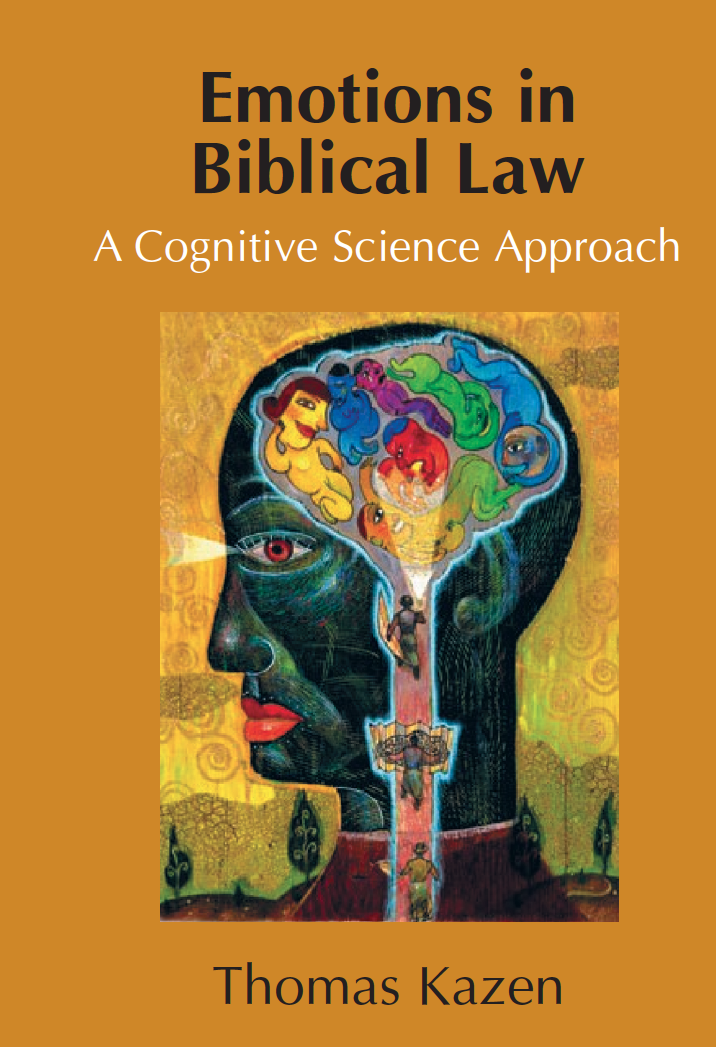
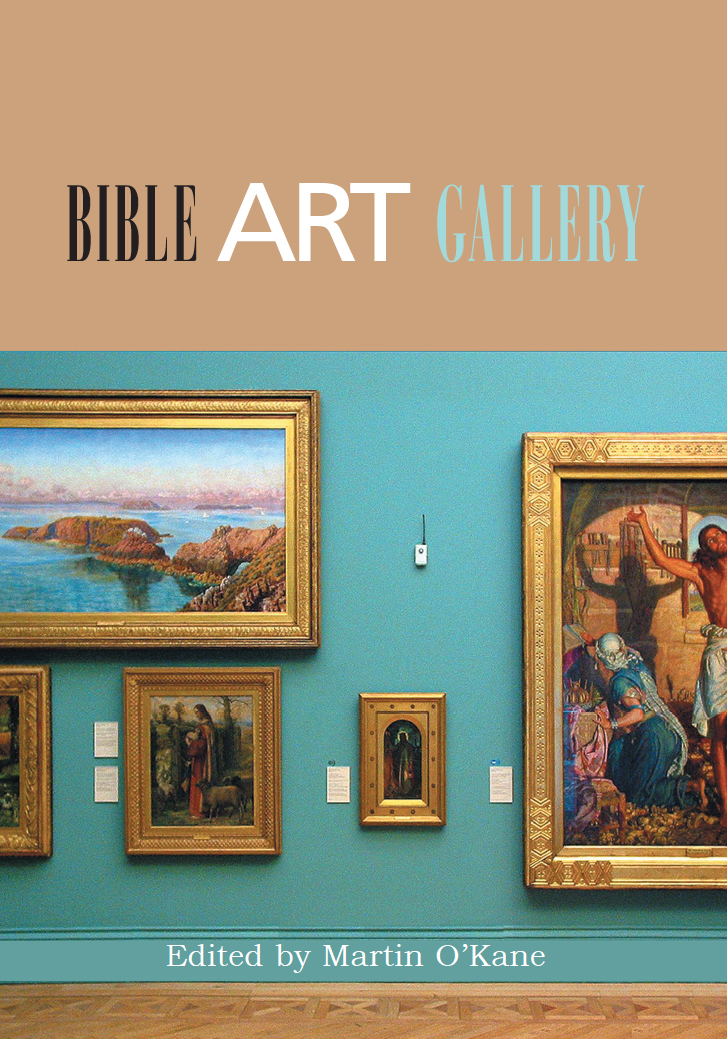

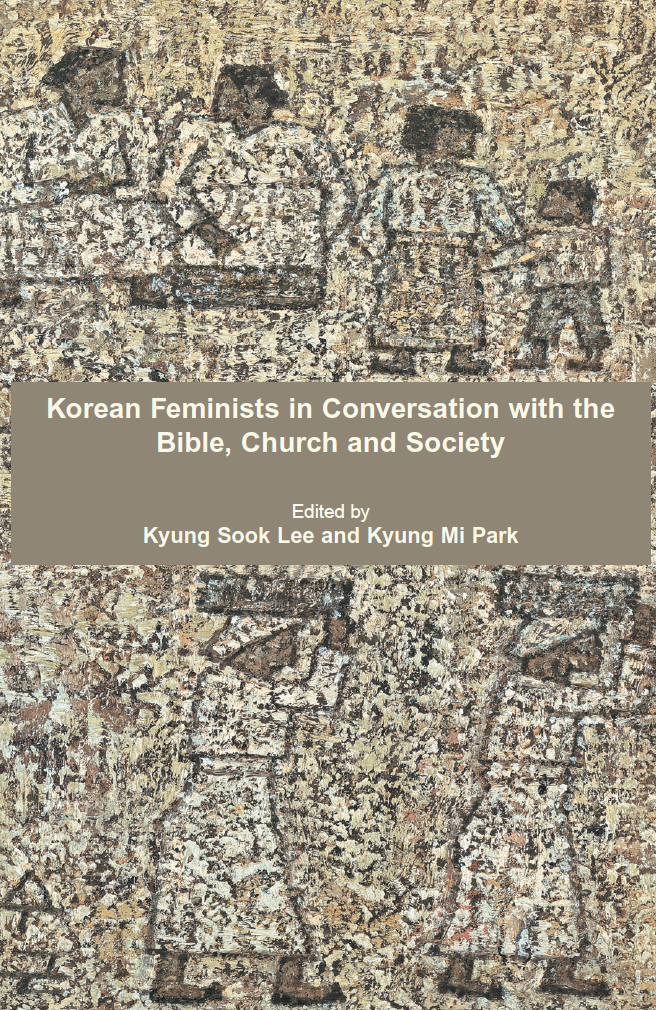

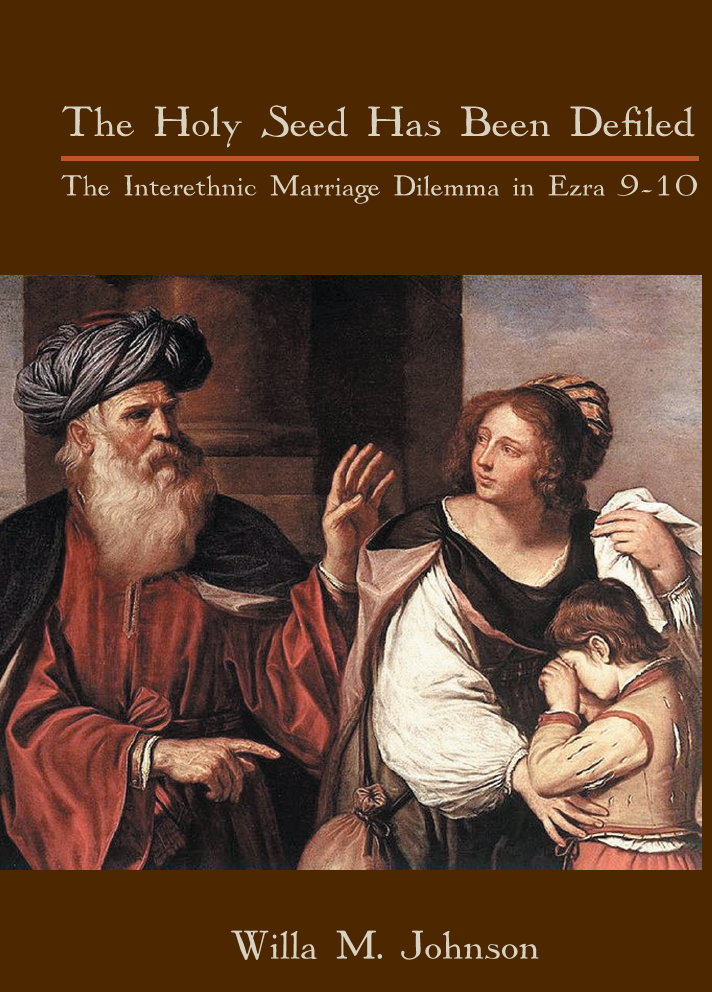
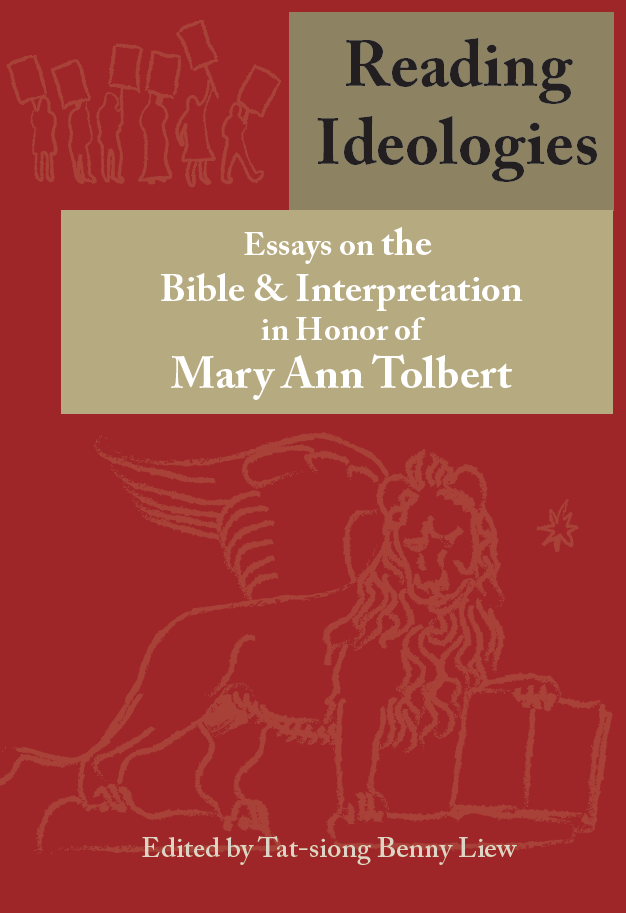
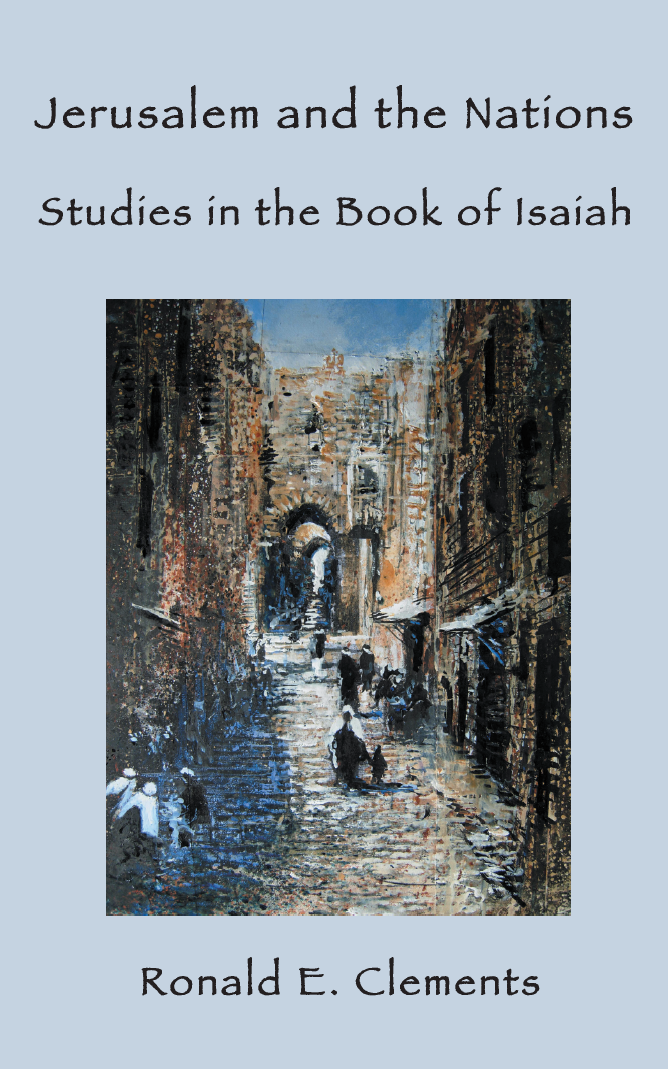
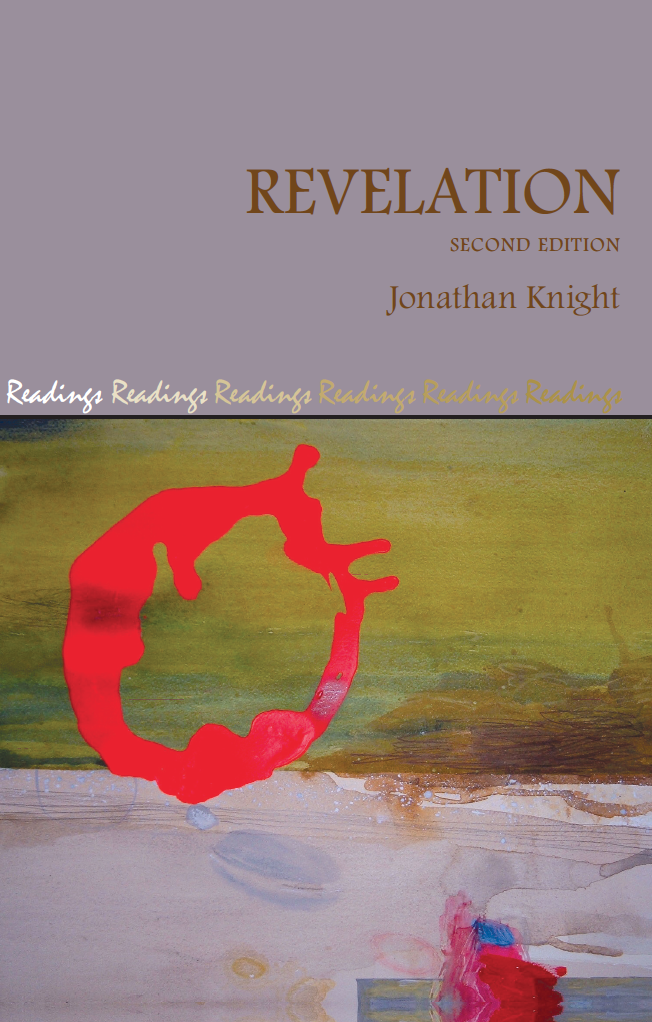
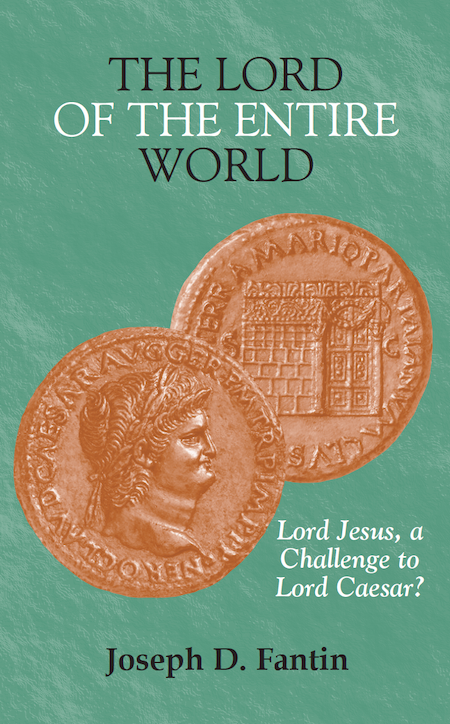
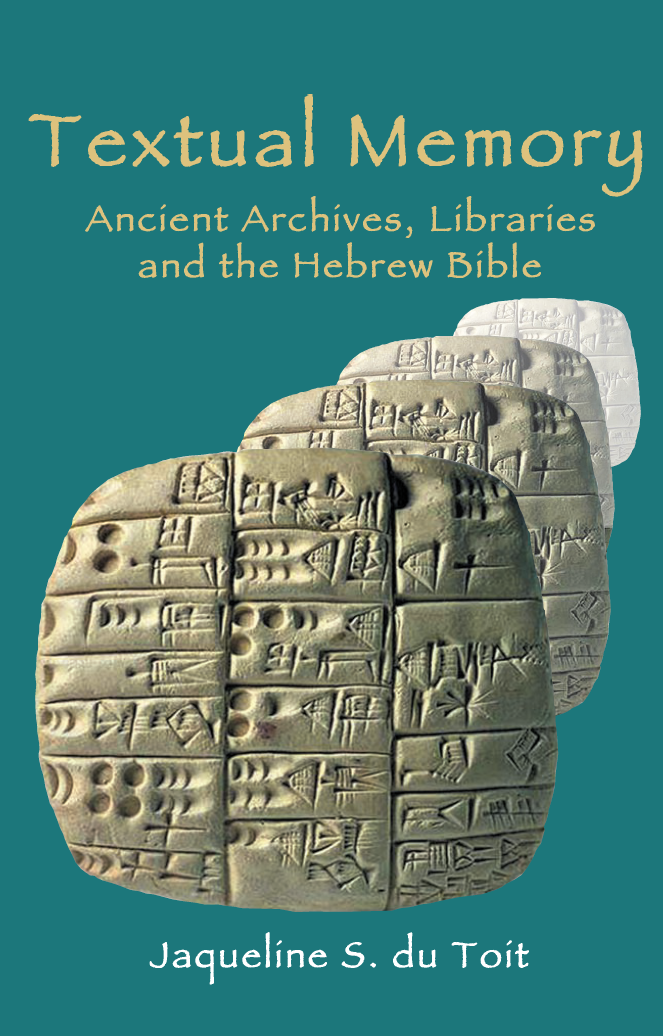
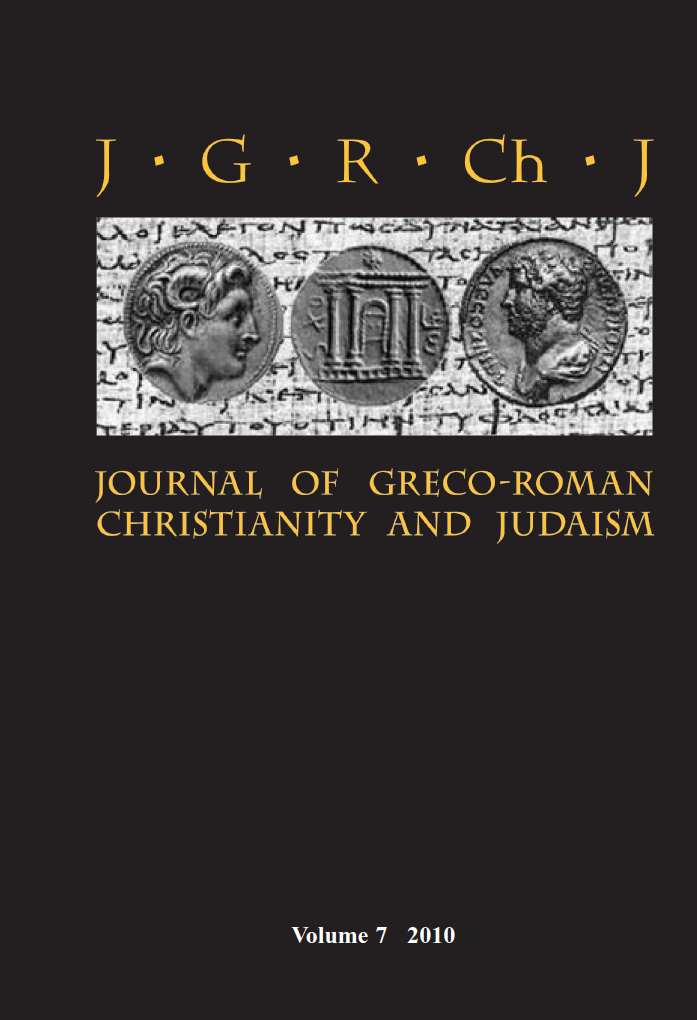
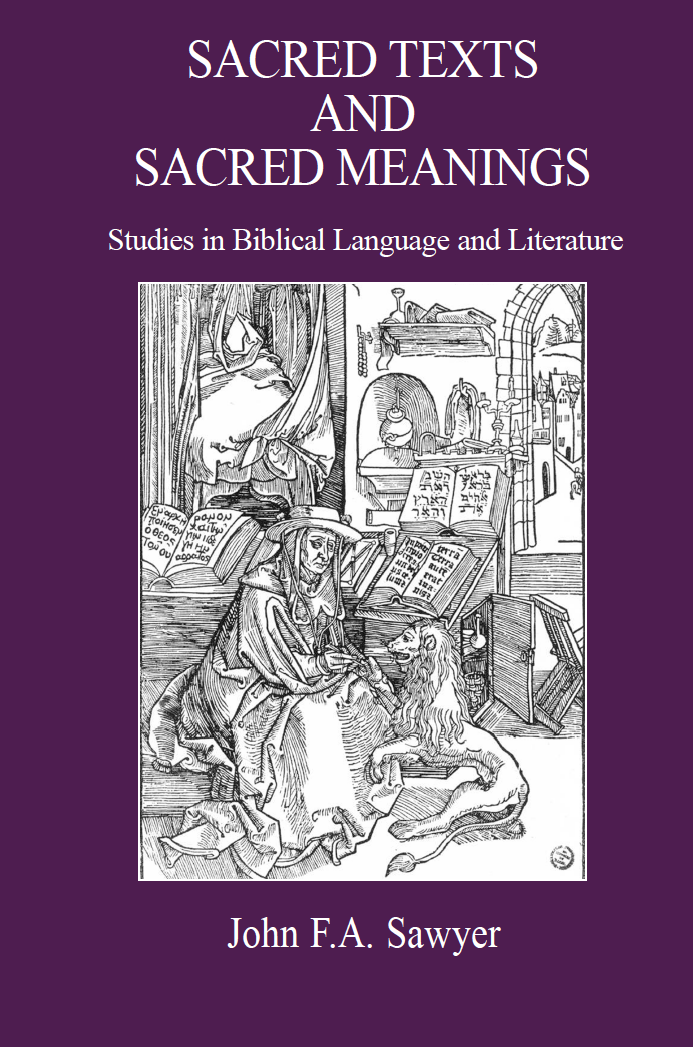
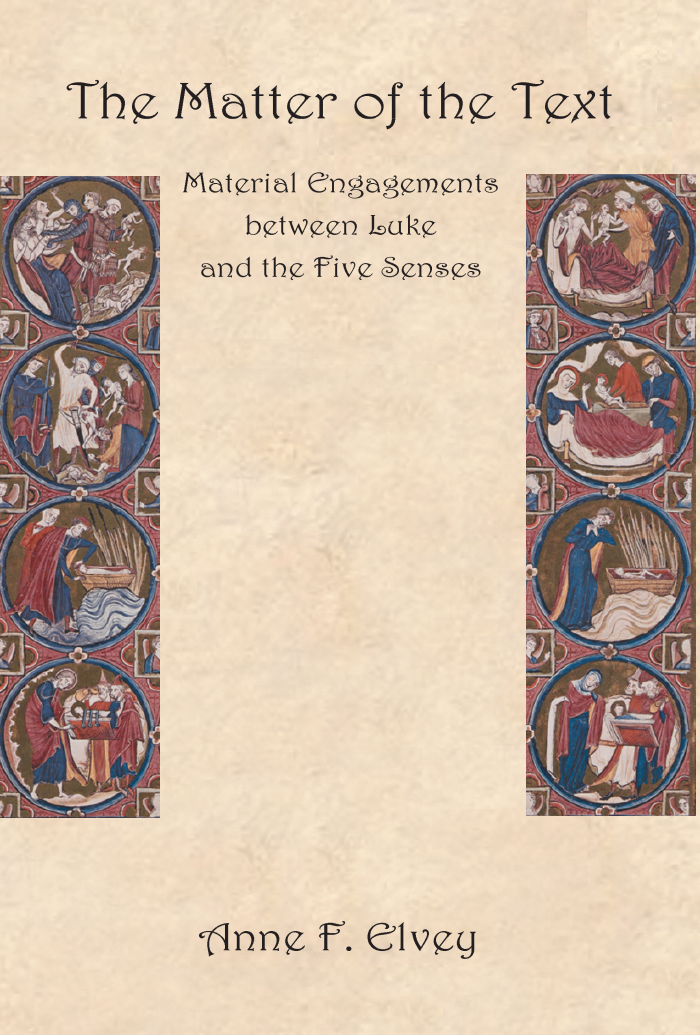
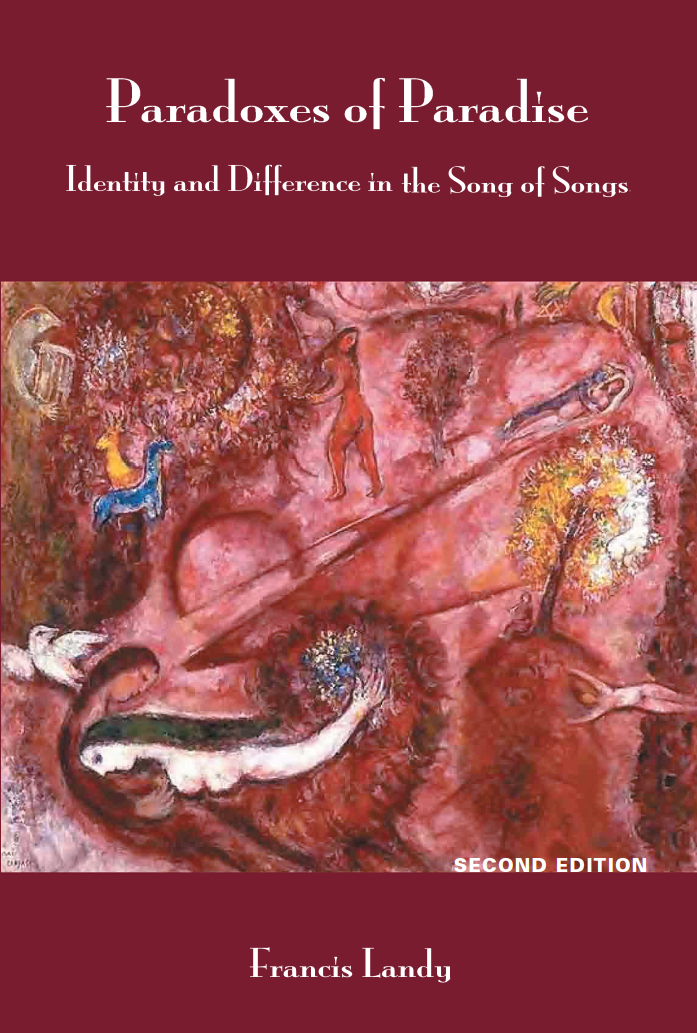


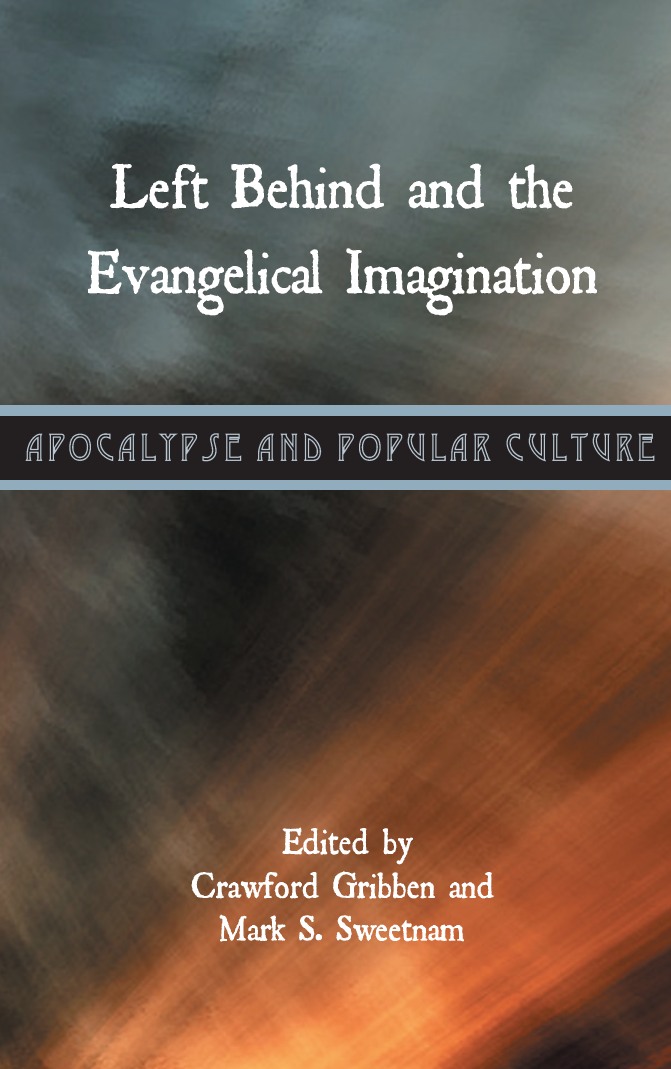
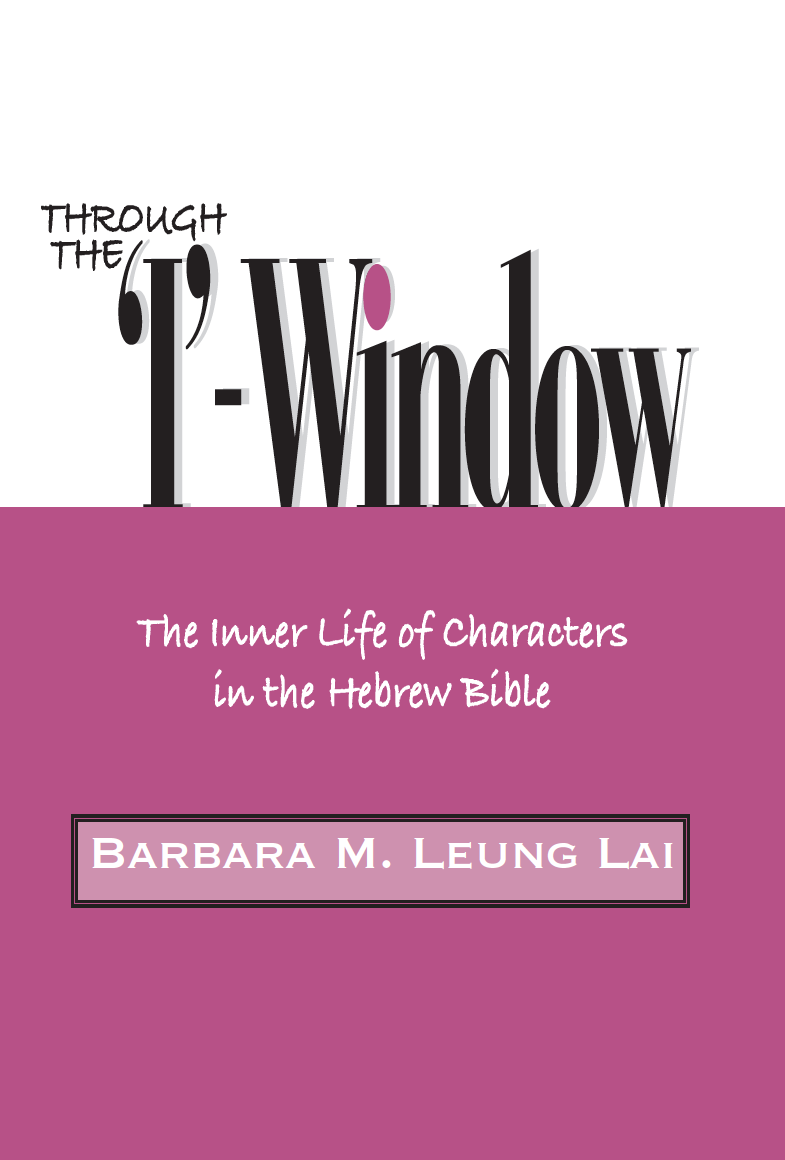
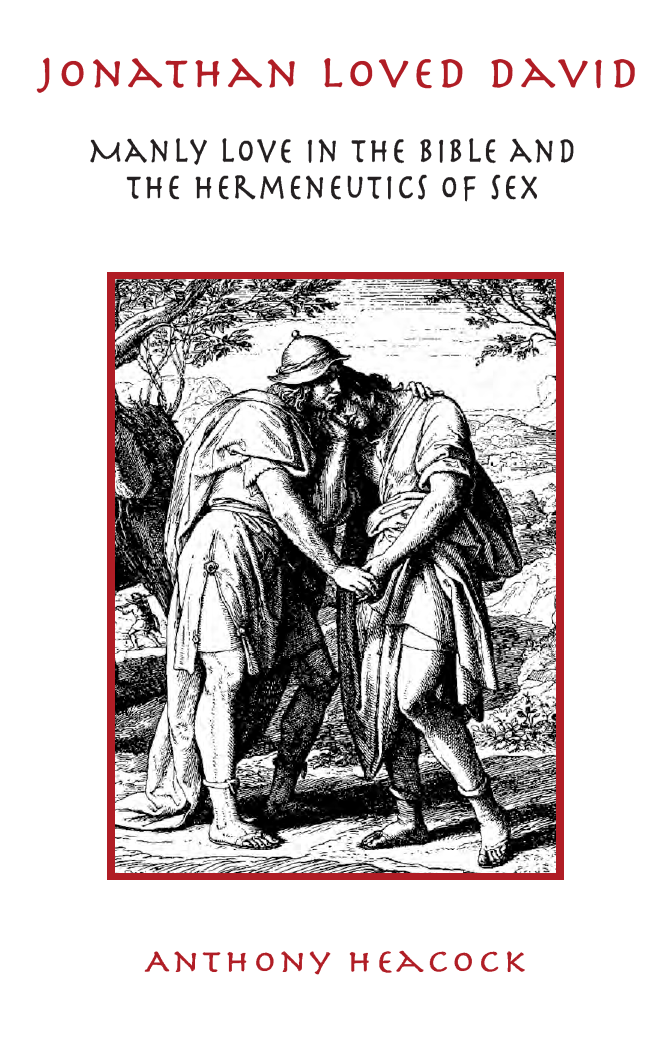
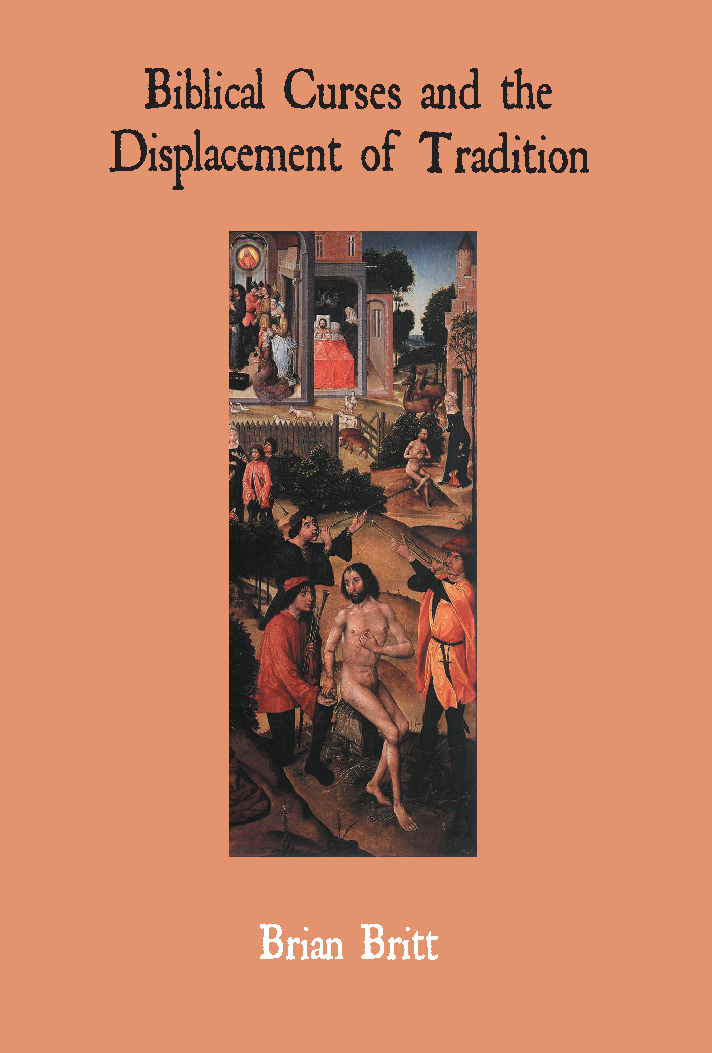
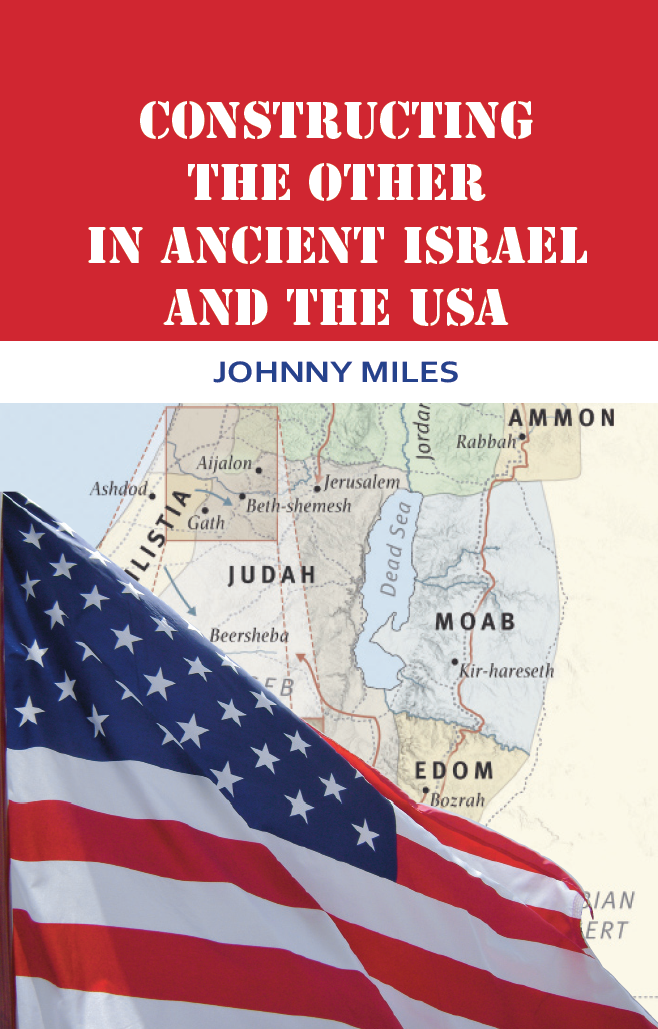
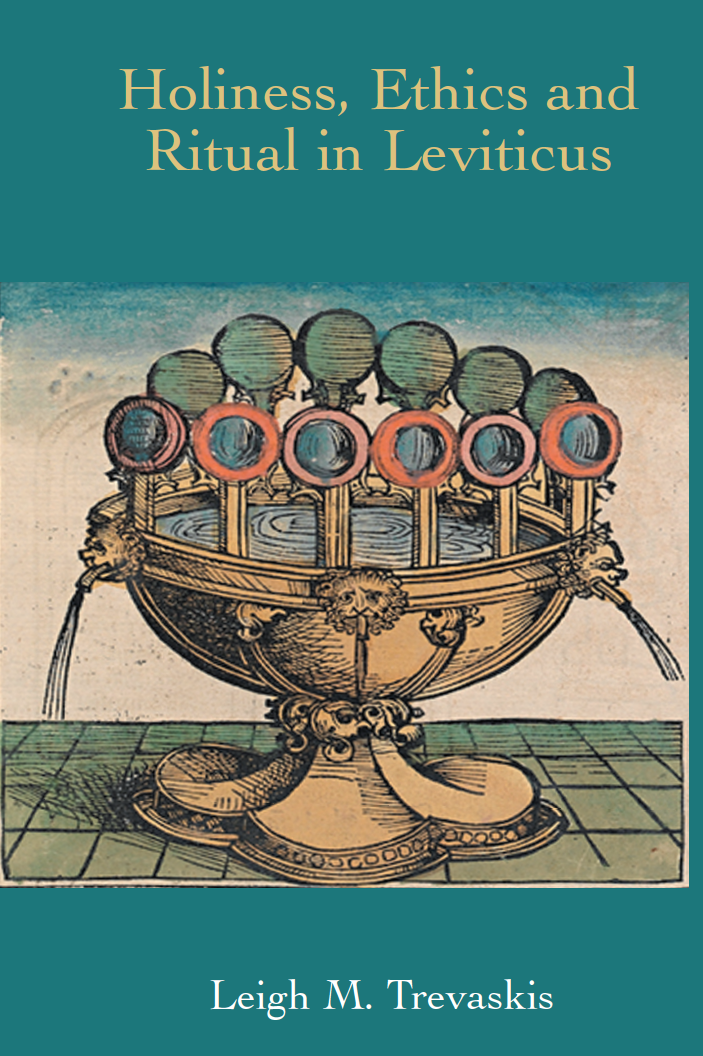


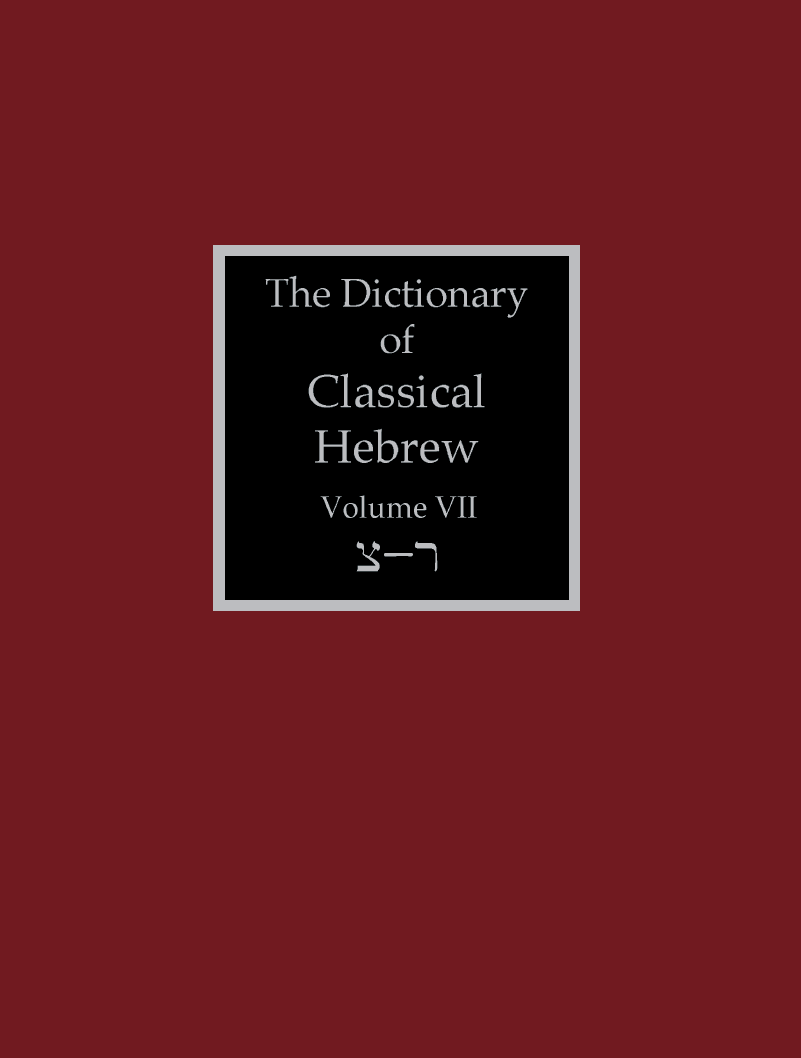


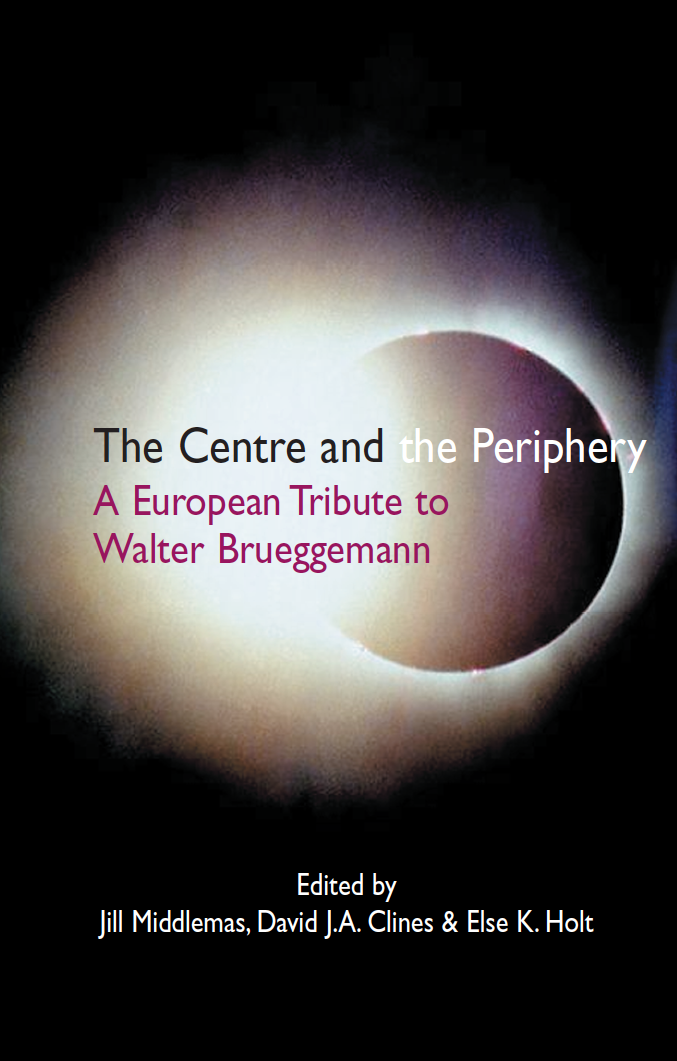
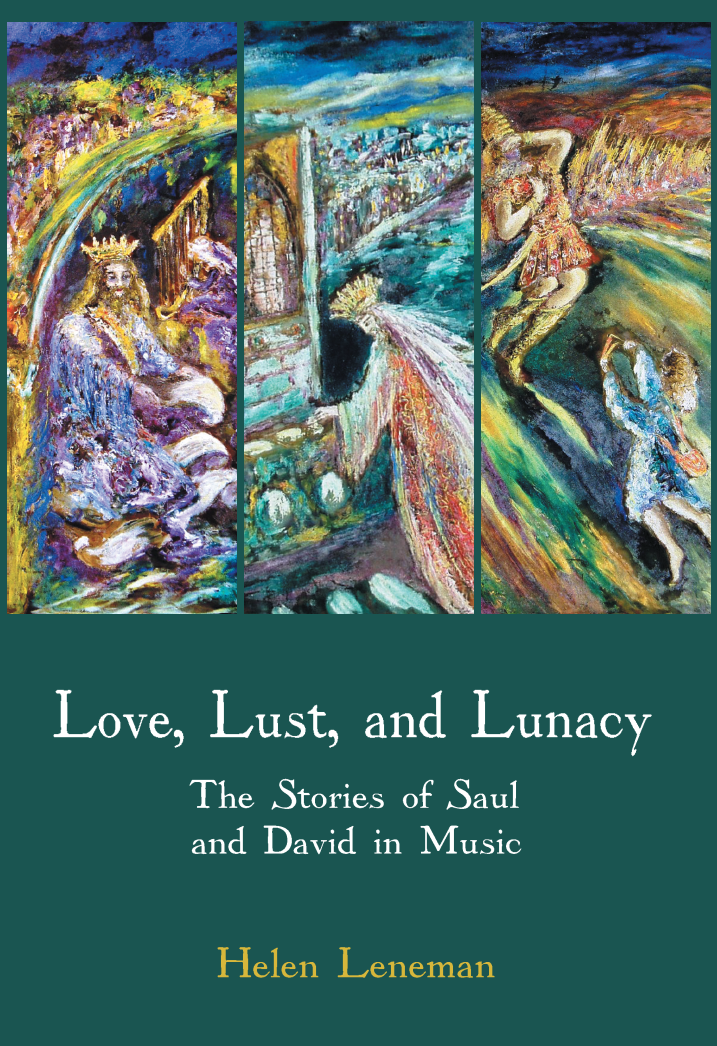

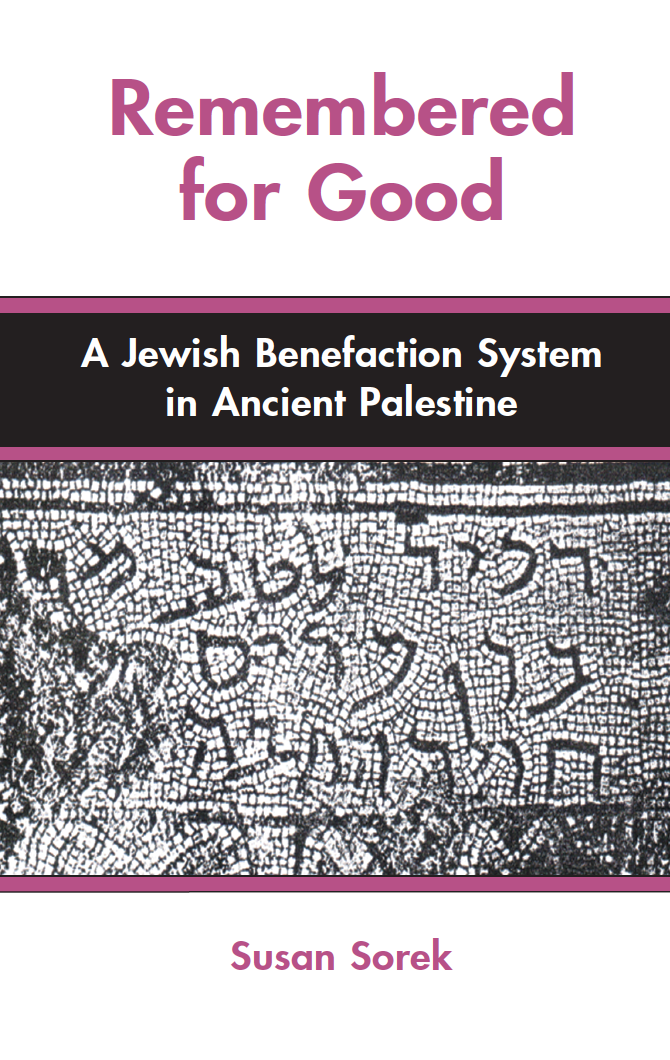

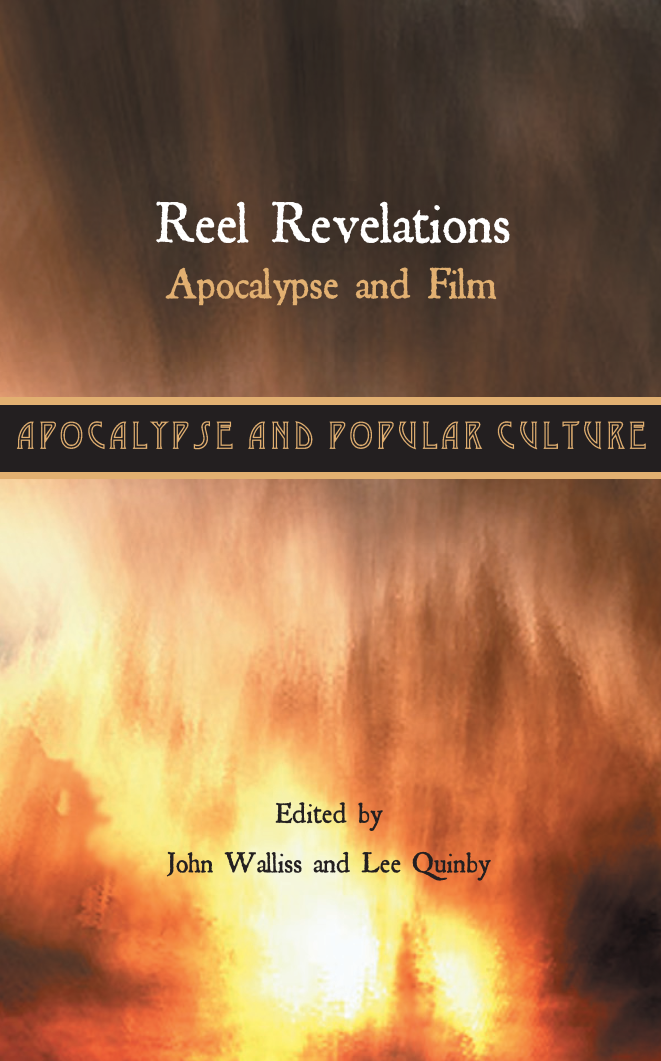
The Birth, the Curse and the Greening of Earth: An Ecological Reading of Genesis 1-11
The Birth, the Curse and the Greening of Earth: An Ecological Reading of Genesis 1-11